To describe La Paz, Bolivia in such a way as to do it justice is indeed a challenge.
At 3600m in altitude, just to walk a block is an adventure that requires one to have their wits about them - as much for the plethora of unruly vehicles, broken sidewalks and streetside vendors as for the thin air. Not an ideal city to retreat to in search of tranquility, there was always a parade or party of some description pushing aside the traffic to take over a street nearby, always with a marching band and fire-crackers. Admittedly we didn´t explore the city half as well as we could have, with so many things to do it was quite overwhelming.
We mostly derived enjoyment from strolling the various markets and eating the menu of the day at the local hotspots. Dale suffered his first bout of food-poisoning when he found himself unable to resist the spiciness of the table salsa at one such foodstall. A thankfully quick recovery and a lesson hopefully learned well.
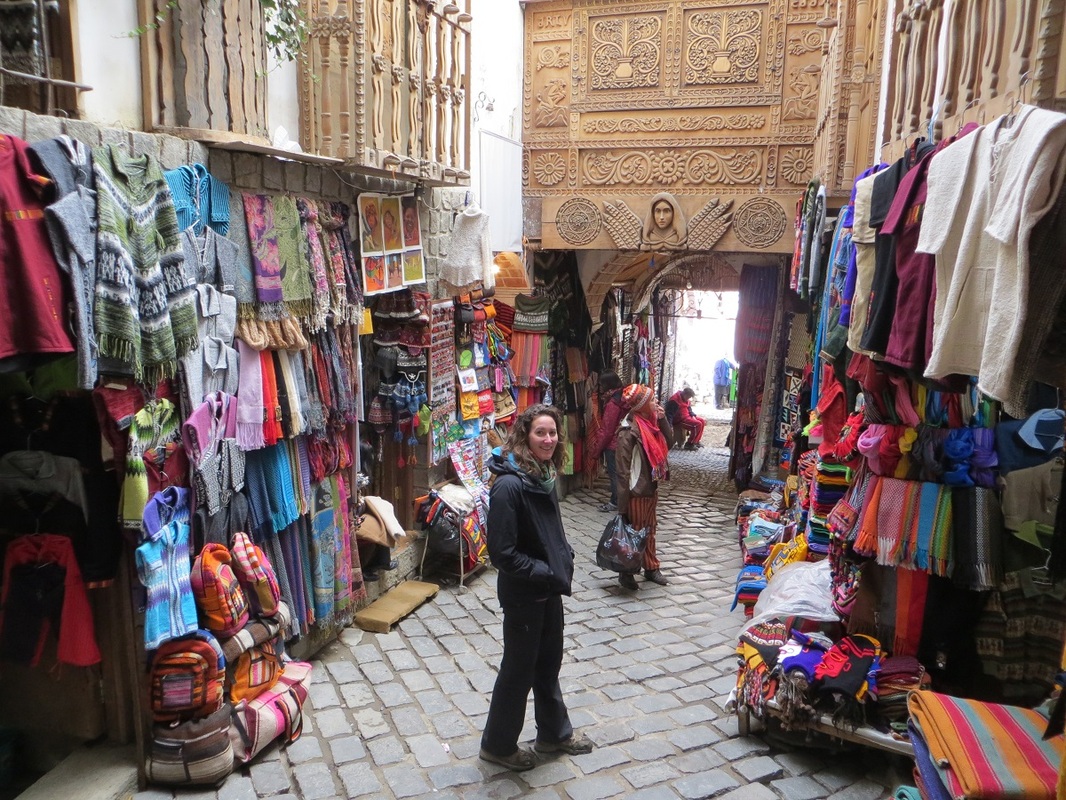
Street after cobblestone-street of shopping!
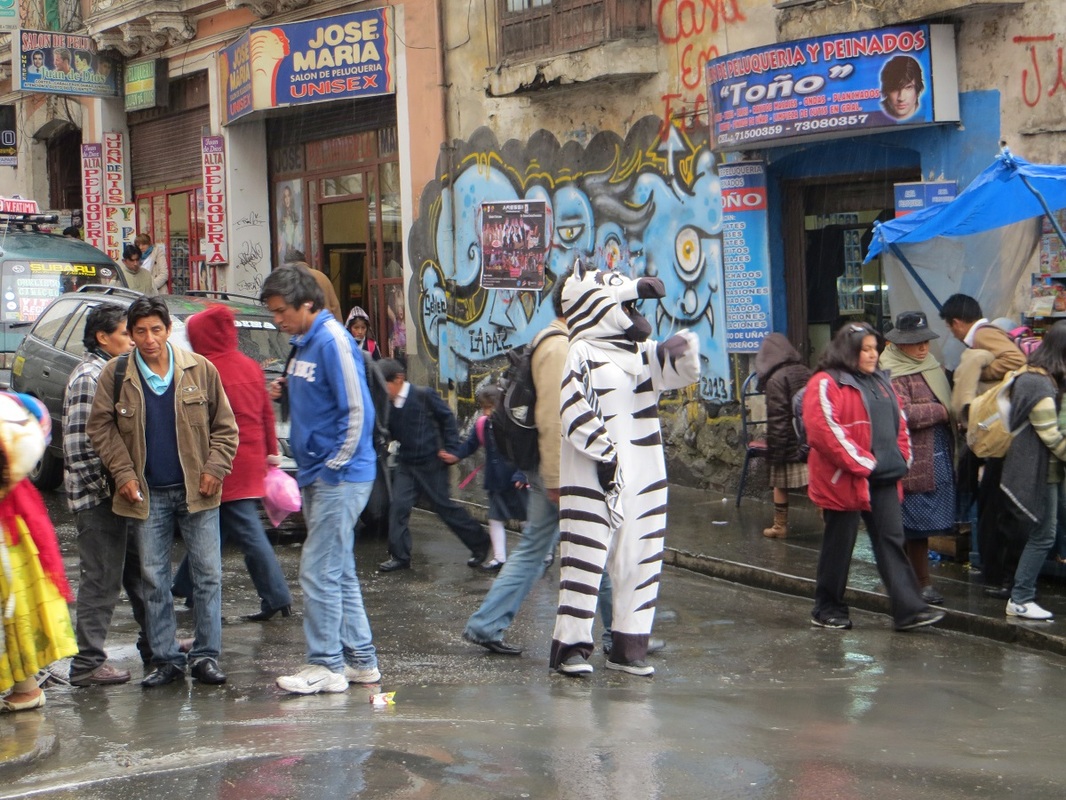
An unlikely fellow to find here. An epidemic of Zebra all over the city guiding traffic and generally being good citizens. A govt. inititive.

San Fransisco Church. The facade has many indigineous touches that represent the merging of cultures
|
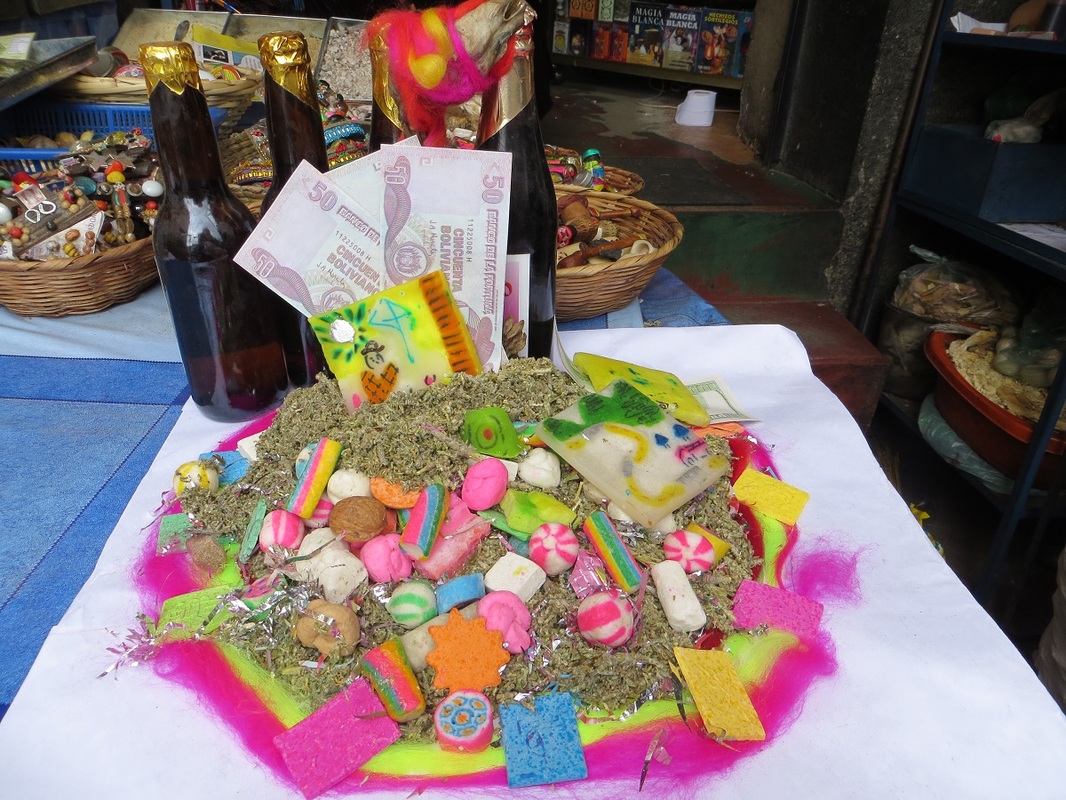
Offerings for wealth and prosperity in the witches market.
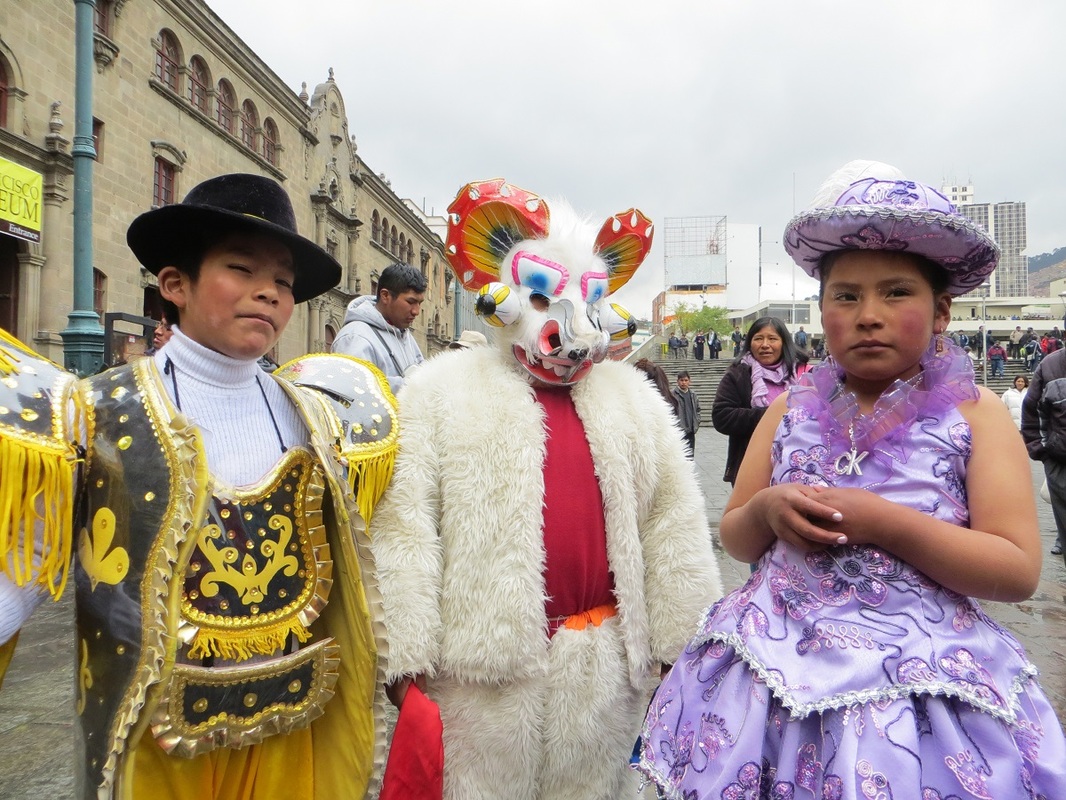
The vibrant colors and designs of the costumes are incredible

An artistic touch to an enduring image
|
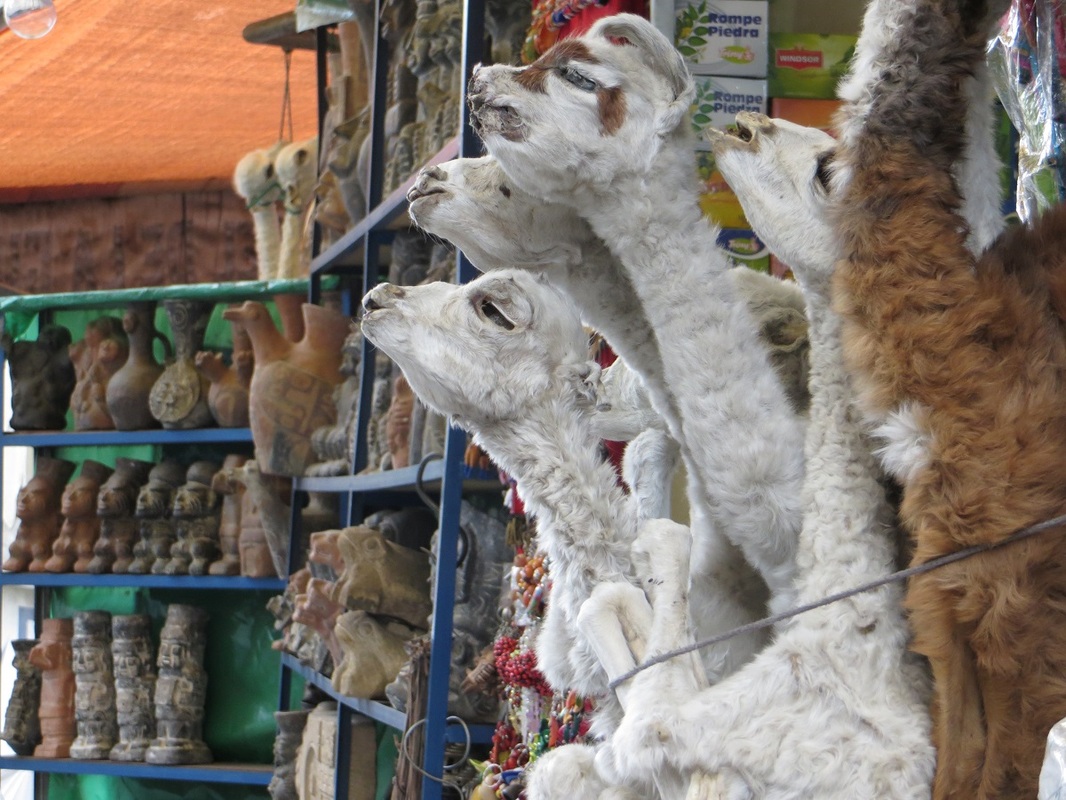
Llama fetus are buried under the cornerstone of new buildings to appease Pachamama.
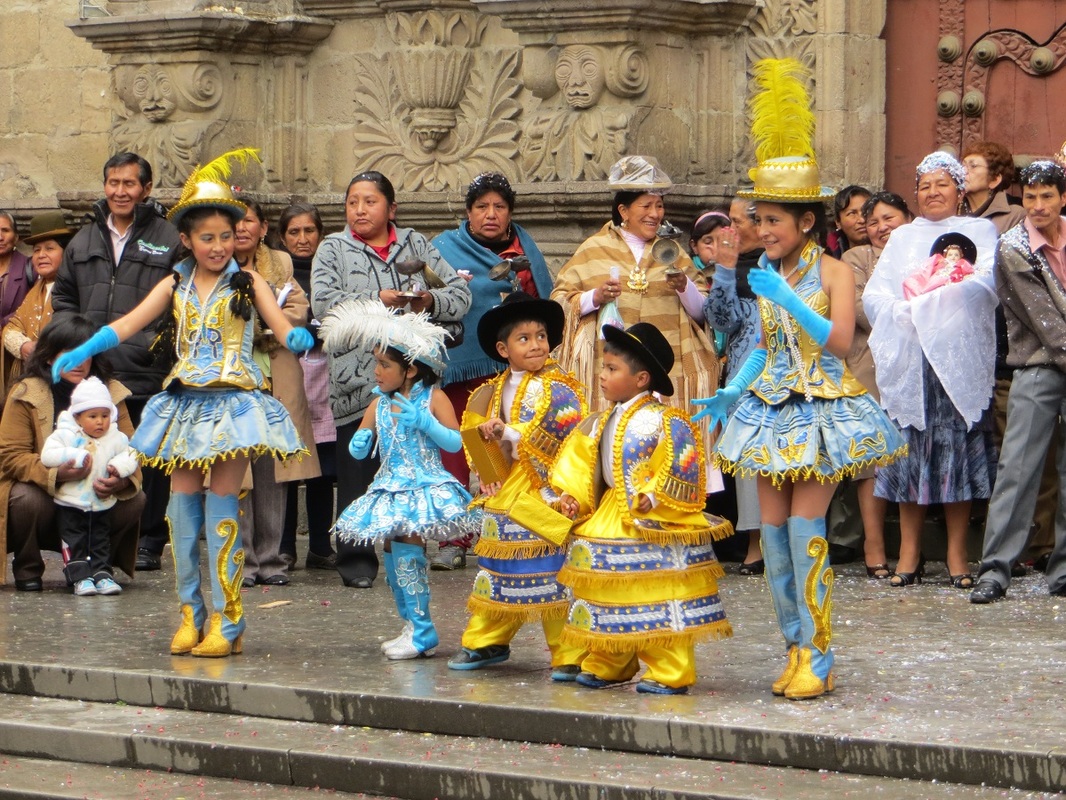
No such thing as a day in Bolivia without a festival
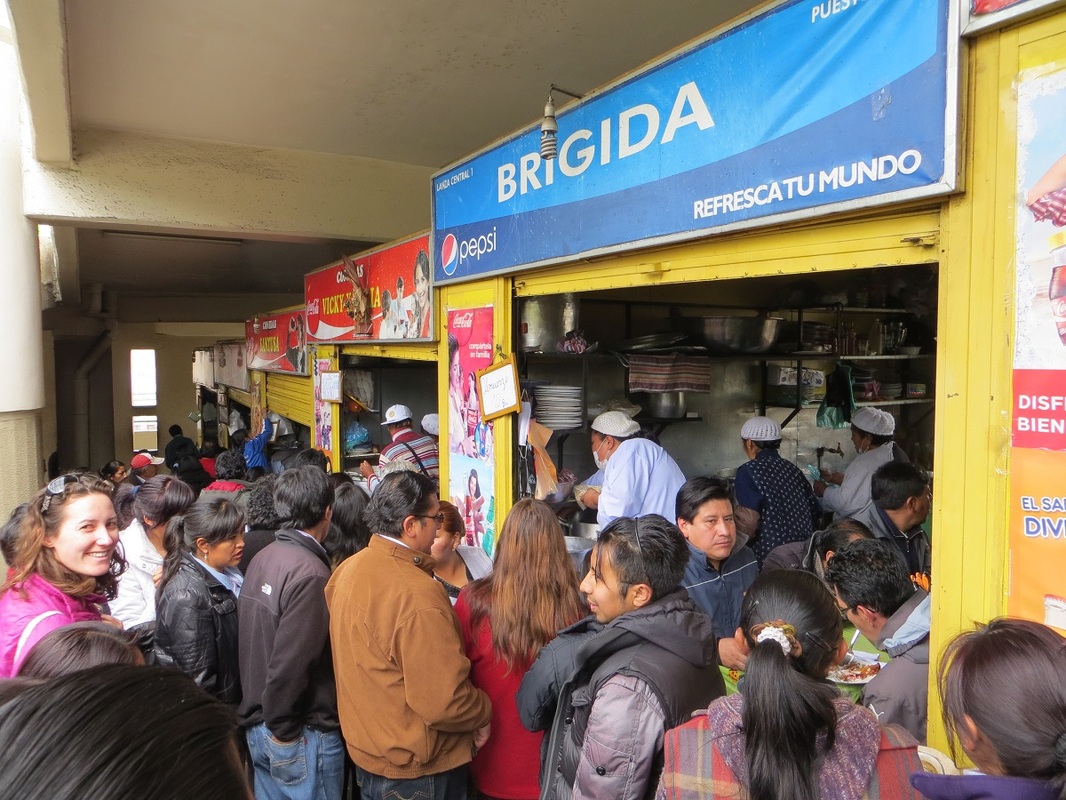
To pick the best lunch spot, follow the locals
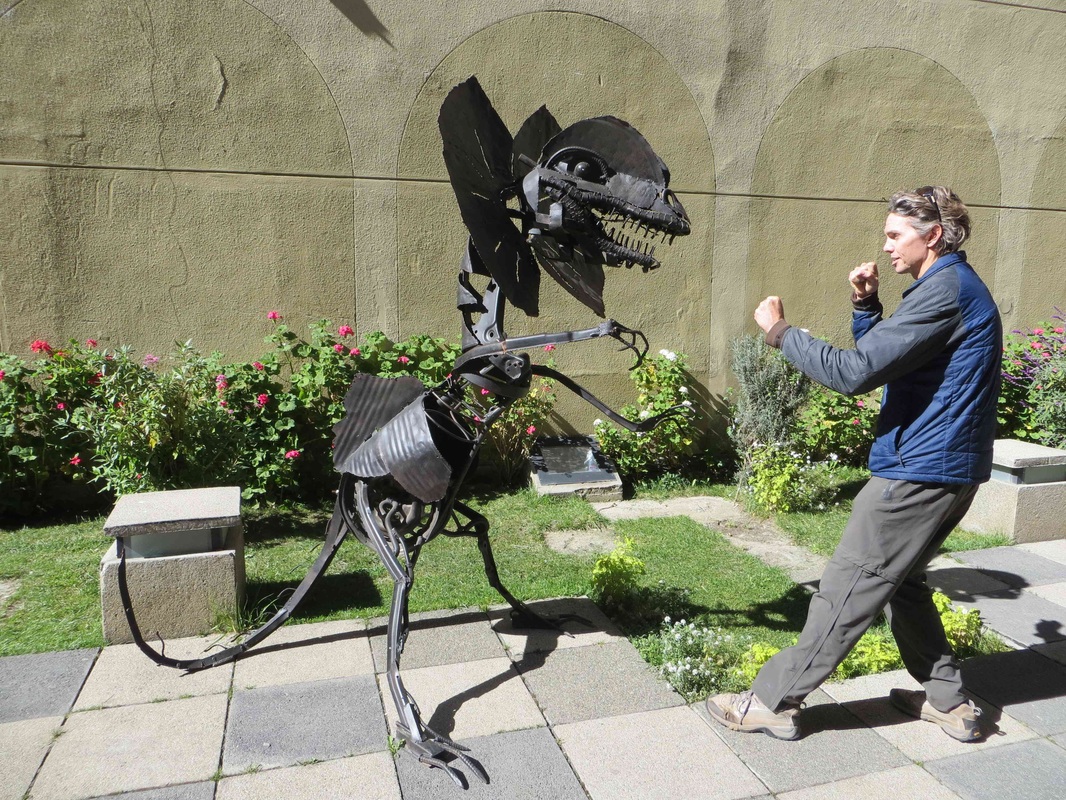
Dale defending his honor
| One big day trip out of La Paz was to visit Tiwanaku, the ruins of a spiritual center of the pre-Incan Tiwanaku people. They were a powerful people ruling the area for thousands of years before mysteriously disappearing a few hundred years before the Incas came to power. Although the majority of the area is still to be escavated we were amazed by what ruins were visible. The huge stone monoliths covered in carvings, the immense gateways marking the entrances to the spiritual complexes and the amazingly accurate right angles of the carvings were all stunning. In the past some archeologists had even postulated that the stonework was so perfect it had to have been done by aliens! We were quite pleased to have visited the site before heading to Peru in order to appreciate the remains of pre-Incan civilizations.
After our wonderful but bare bones jungle float trip we decided to follow it up with three relatively luxurious days at an ecolodge in the pampas. Rurrenabuque is unique in that it is located in a region where the jungle covered foothills of the Andes transforms into a flat fertile plain.
Just the 4 hour drive to the ecolodge felt like a scene from National Geographic, with wildlife at every turn if you dared to take your eyes off the road, which was not much more than a dirt track weaving around muddy bogs and potholes that could and did swallow cars and trucks alike.
Out of the car and into a long, thin canoe with an outboard. This would serve as our transport for the next three days, weaving along the snakey Rio Yucuma viewing Caiman sunning themselves (on the rare occasion we had sun), Capybara, occasional monkeys and over 50 spieces of bird. We were a little unfortunate with the weather, experiencing torrential downpours most days, but to try to look on the bright side one might say that we were simply, truly immersing ourselves in the amazonian environment.
Highlights were the toucans, pink river dolphins, sloth-sightings, hearing the monkeys reply to our guide and our desperate attempts to push the car out of a knee-deep bog for fear of being stuck overnight a long way from anything resembling a comfortable bed.
We knew that we wanted to visit the Amazon while in the neighborhood, but we had not made any real plans. While in La Paz, Bek found a flier advertising just our type of tour: Build a raft and spend 5 days floating through the Amazon jungle. Done!
So we hopped on a bus for a harrowing 10 hour bus ride to the start of the journey - possibly the most dangerous thing we have done to date (I will spare our parents the details, but thankfully we arrived safely). The following morning, after a Bolivian brekkie (rice, steak, fried egg, grilled onion, and platano) we watched as our guide transformed 8 tires and a dozen bamboo poles into our home for the next 5 days. Thoroughly excited we loaded up and began the journey. It was perfect, no engine = no engine noise. It was us and the sounds of the jungle. Our soundtrack was the chatter of toucans, macaws and innumerable other tropical jungle birds, set to the slaps and yelps of gringos being molested by mosquitoes. By day we floated down the river, even eating lunch on the boat, although we did make occasional stops to go for a hike or visit indigenous families living in the jungle. By night we found a sandy patch of riverbank on which to camp. On 2 occasions we were startled by the sound of gunshots! Locals hunting for food for their families. The trip started out warm and sunny but by day 4 we were socked in by clouds and had to endure occasional rain storms. But nothing dampened our enthusiasm and enjoyment of this slow adventure. It was absolutely perfect and we still miss our lazy days listening to birdsong as we watched the jungle transform over the 280 km that we floated.
(click on the photo to see the caption)
After 6 plus hours of a bumpy, windy roads we arrived in Toro Toro at 1am. Bleary eyed, we wandered through the town knocking on doors until someone answered, only to discover they had no rooms available. Eventually we found our accommodation, but had to barter to get a reasonable price.
Phew, we were quite happy to have a sleep-in and wander around town the next day. It was a spectacular sight, the town was set in a valley composed of amazing rock fins. Picture standing inside the bottom jaw of a crocodile mouth looking out, that is how this valley appeared. The villagers are still leading lives of hard manual labor. There were no tractors around to help them reap their fields or separate the wheat from the chaff, it was all done by hand!
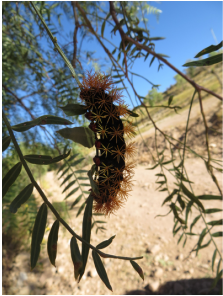
Amazing caterpillar
| | Our second day, Bek's birthday!, was a busy one. First we crammed 8 people into a 5 seater car, then we flossed the crocodile teeth on our way up and over to the top of a nearby mountain range. Here we wandered through a mass of stone, eroded over the eons through the force of water. We encountered some amazing chapels and cathedrals of stone and some great vistas of the surrounding countryside.
Post lunch we ventured underground. We visited a cave full of sleeping vampire bats, squeezed through some very small spaces and even got to see some blind cave fish (again the stuff of documentaries).

Decomposing vampire bat
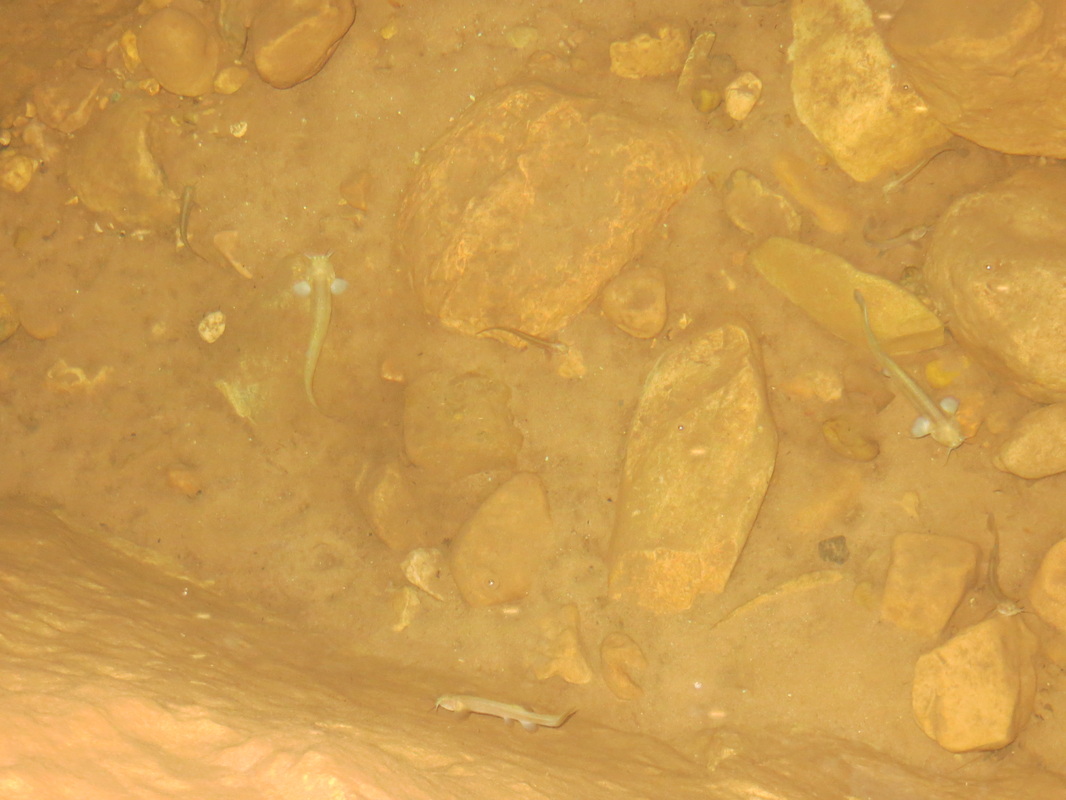
Blind cave fish
|
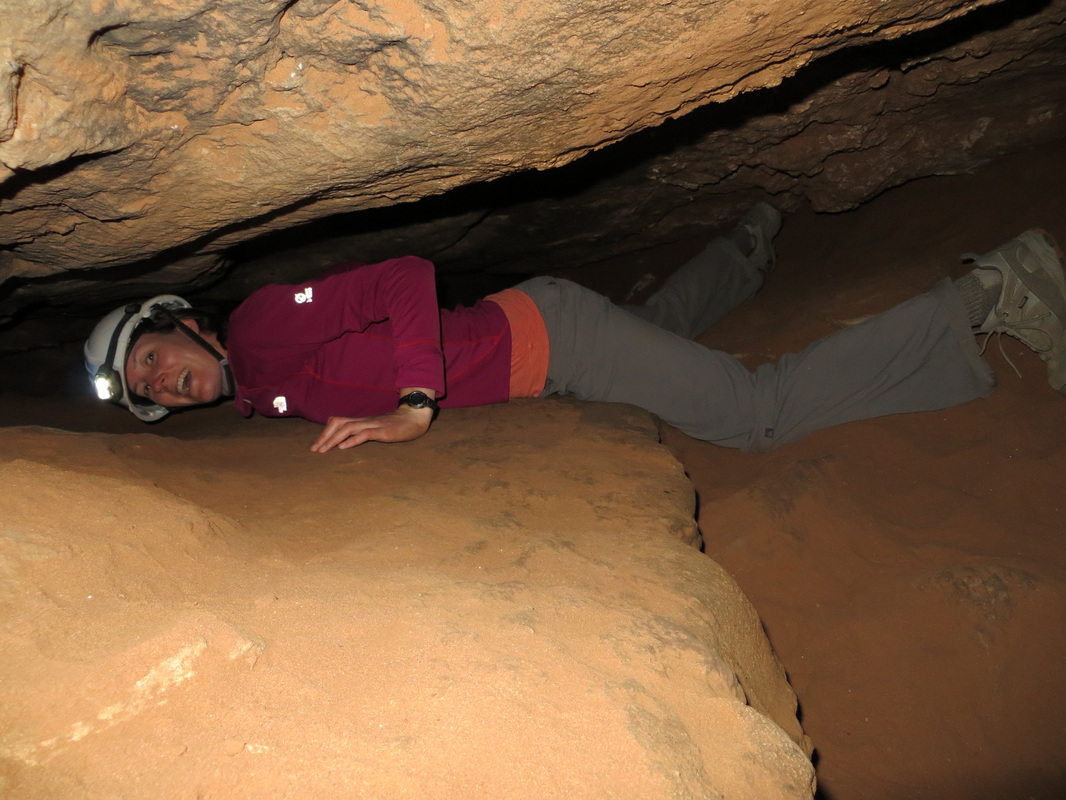
Bek actually is lying down here!
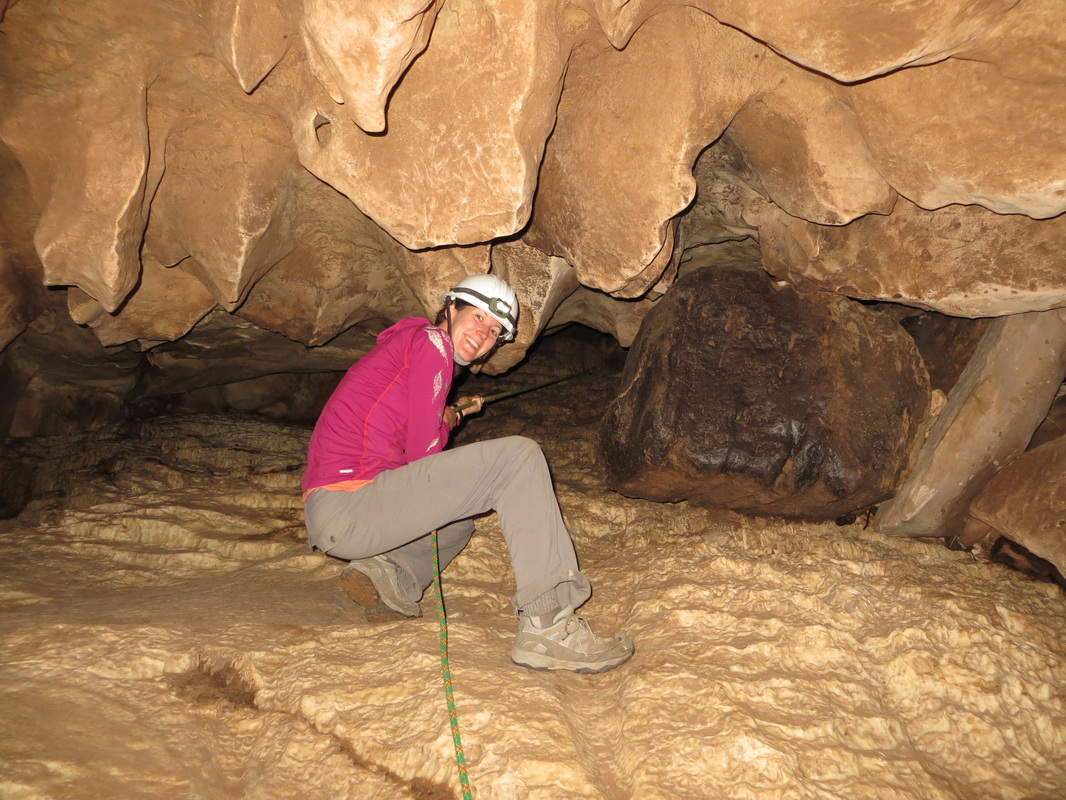
Rock-climbing at a whole new level.
| The following day found us frolicking with the dinosaurs. There were so many dino footprints!
The theory is that there was a big migration of dinosaurs during a time of drought and all types came tromping through the area in search of greener pastures (really makes me want to watch 'The Land Before Time'!) There were footprints of the T-Rex, Velociraptor, Brontosaurus, Stegosaurus, Triceratops and Pterodactyl among others. It was so interesting to see all the shapes, sizes and depths of the footprints.
We spent the rest of the day in Toro Toro canyon appreciating the 250m drop from the viewpoint, admiring the rare and endangered red-fronted macaw, and cooling off in the refreshing stream at the bottom of the canyon.
El Fuerte, a pre-Incan religious site. This ceremonial area was carved into the stone that topped the mountain and is believed to have immense spiritual significance. It held a commanding view over the wonderful jungle valleys below. And from this vantage it seems the area has not changed in thousands of years.
La Yunga, cloud forest and ancient giant ferns. These ferns apparently grow 1 cm a year, and are ten to fifteen meters tall, you can do the math. We spent the day tromping through the jungle and spotted this green snake about 15 minutes before we arrived at the car. So glad we did not spot him earlier or I would have been so paranoid walking through the jungle. As it was I was blissfully unaware of the snakes lurking around.
We elected to go on a birding tour, we are so lame, I know. But we had quite a good time, saw over 20 species of birds in 3 hours of walking. We were only 2 hours from the jungles of La Yunga but it was a semi-desert area. We don't have any good photos of the birds but we did see them I promise. Our favorite was the red comet, a tiny hummingbird with a long red tail. It was unexpected and beautiful. As an added bonus we also got to see some cave paintings, these are particularly important because they are some of the only ancient paintings of faces in the region. Funnily enough there was also a painting of a bat and we could hear the squeaks and smell the guano of some vampire bats that lived in the cave.
Normally group tours are not our thing, too many factors on the tour that could ruin the experience. So we had some trepidations when we signed up for a 3-day group trek outside of Sucre. Thankfully we had an absolutely amazing time hiking through the Bolivian countryside and learning about the Quechua culture. The Quechua are thought to be the descendants of the Incas, they speak their own language and many still live rural lives of subsistence farming. Our guides, who spent their youth in small rural villages before heading to the city for school, were able to explain much about the Quechua culture while helping us to speak with and interact with the villagers. Our experience to date had been waiting for translations from Spanish to English. It was a pretty cool experience to be relying on our Spanish skills as our guides translated from Quechua.
Captions will be under the photos if you click on them.
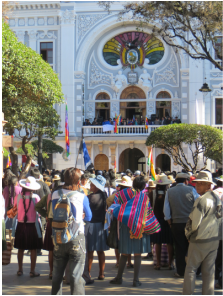 Protest speeches  Delicious dinner  Spicy lunch 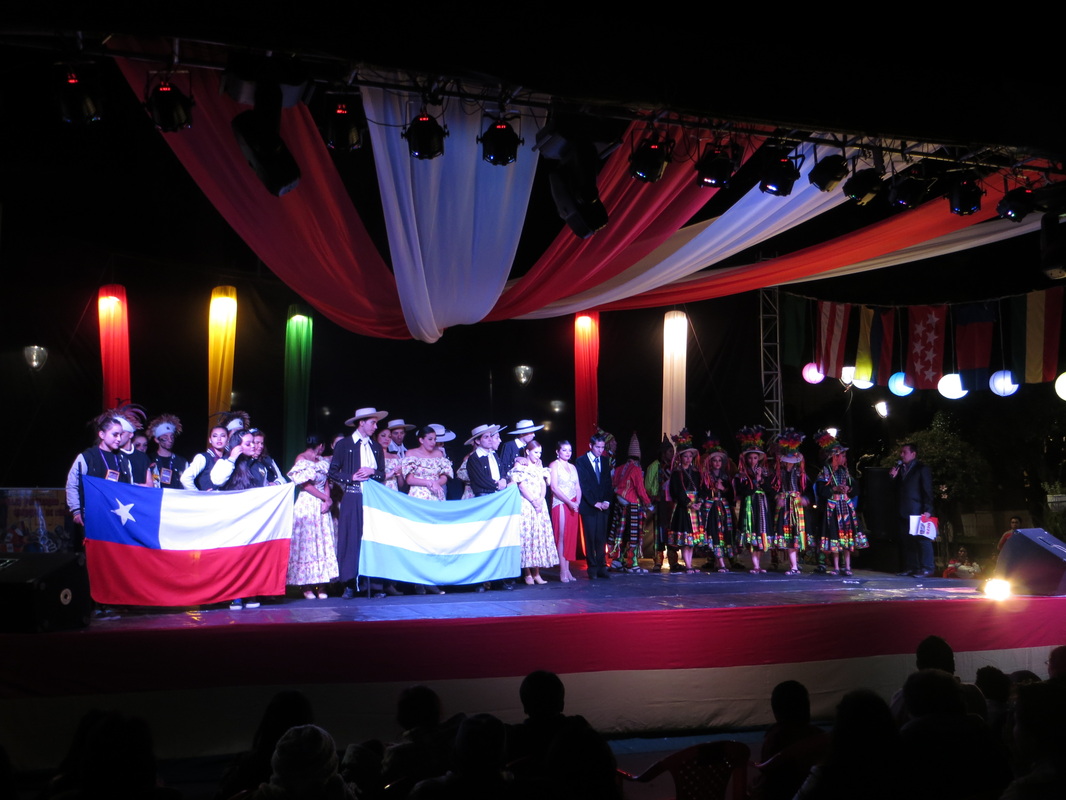 Folkloric dancing from Bolivia, Argentina, and Chile  The best public telephone ever | The beautiful white city of Sucre, one of Bolivia's capitals, kept us entertained for far longer than we had anticipated. Between the food, protests and celebrations we had a very full few days. I think we had spent 3 days in Sucre enjoying the festivities before we stepped foot inside a church or museum.
We had conveniently timed our visit, by no planning on our part, to coincide with the huge 25th of May celebration. The 25th of May is important in Bolivia because it is the day that the first cry for independence from Spain was made. As Sucre was the epicenter of the rebellion from Spain in all of South America, they dedicated the entire month to celebrations! We had been told that there are at least 300 celebrations in Bolivia each year and we got to experience 5 of them in Sucre. In the evening we spent a whopping $4 each and got a box seat at the theater for an evening of traditional dancing. Other days there were free music festivals in the various plazas, more folkloric dancing in the main square, military bands playing while people danced in the street, and of course the big parade, in which we thought there were more participants than observers. The vice-president even showed up to admire the spectacle.
To add to the chaos, there were also almost daily protests with marching supporters, chants, and firecrackers. From what we could gather the teachers and nurses were protesting so their pensions would not be cut. This was happening all over Bolivia and made some transportation difficult as they blockaded the streets for days on end.
And of course we can not forget to mention the food. We found our way to the central mercado for lunch and dinner most days. They meals were huge, delicious and cheap. For a plate laden down with food we paid less than $2 USD. And we also had our fill of fresh fruit, something lacking in our diet through most of the trip.
 Enjoying beer while listening to PK Dos, a popular Bolivian band  The end of the parade route |
“Soy el rico Potosí, del mundo soy el tesoro; soy el rey de los montes, envidia soy de los reyes”
“I am rich Potosi; the treasure of the world; the king of mountains; the envy of kings.”
Inscribed on the official shield of the city.

The entrance to the former mint of Spanish coins
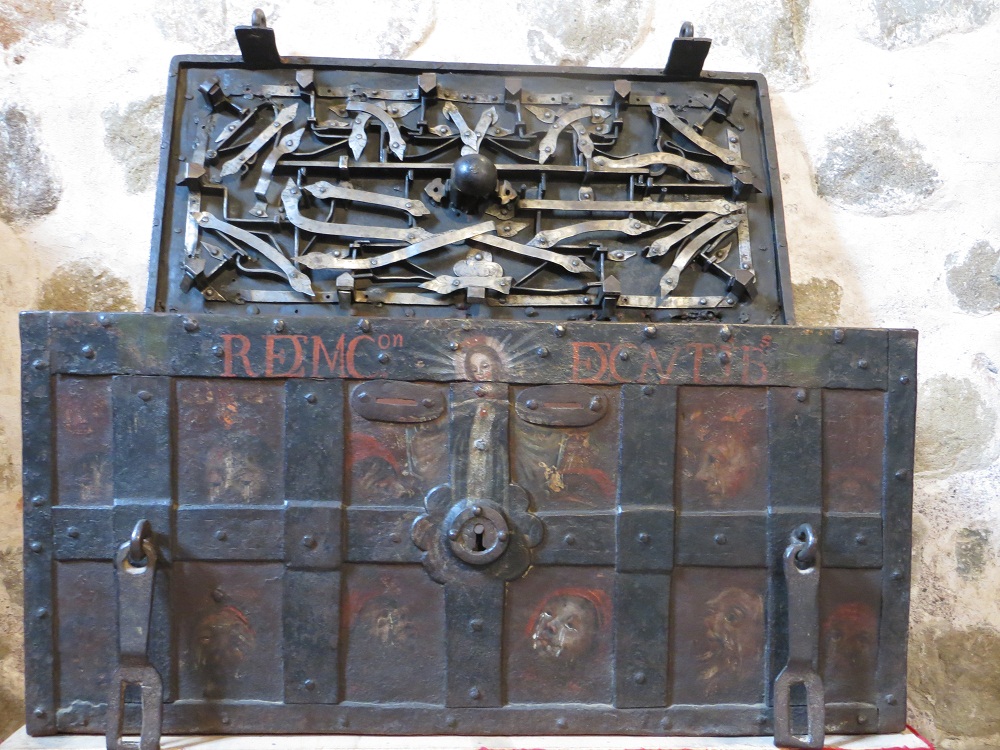
Awesome chest. With the turn of the correct key the 12 locks would unlatch. I thought this was only the stuff of movies!
|
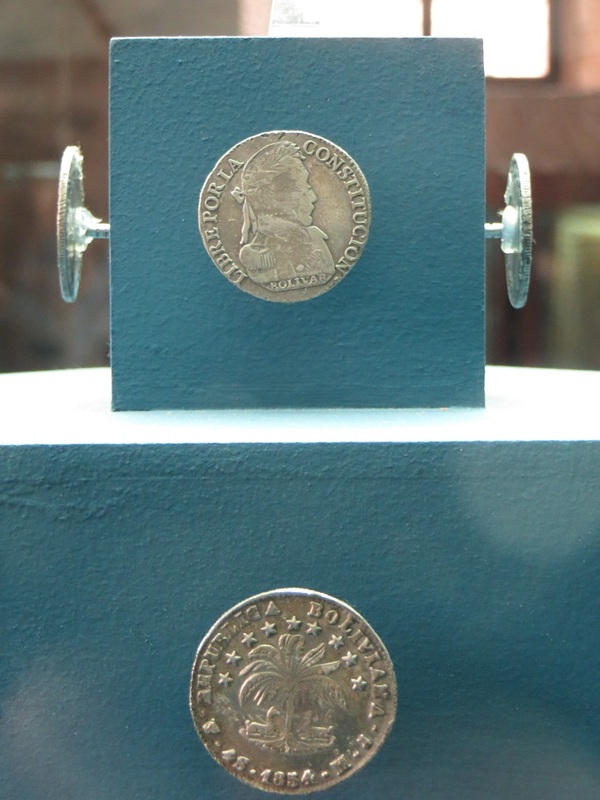
Original Bolivianos
| Located at over 4000m above sea level, Potosi had us gasping for breath and chewing on gobs of coca leaves in an attempt to ease the symptoms of high altitude. This city has an incredible history; at one point in the late 16th Century rivaling London, Paris and Seville for size and prosperity. This was due to the huge amounts of almost pure silver being extracted from Cerro Rico. In Spanish there is a saying "Vale un Potosi" ("It is worth a Potosi") for something really valuable. For Spain Potosi was a fountain of wealth, for the indigenous and slaves it was a guarantee of a short and hard life. It is a fascinating UNESCO city, though its past, present and by all accounts its future are under-toned with tragedy and sadness.
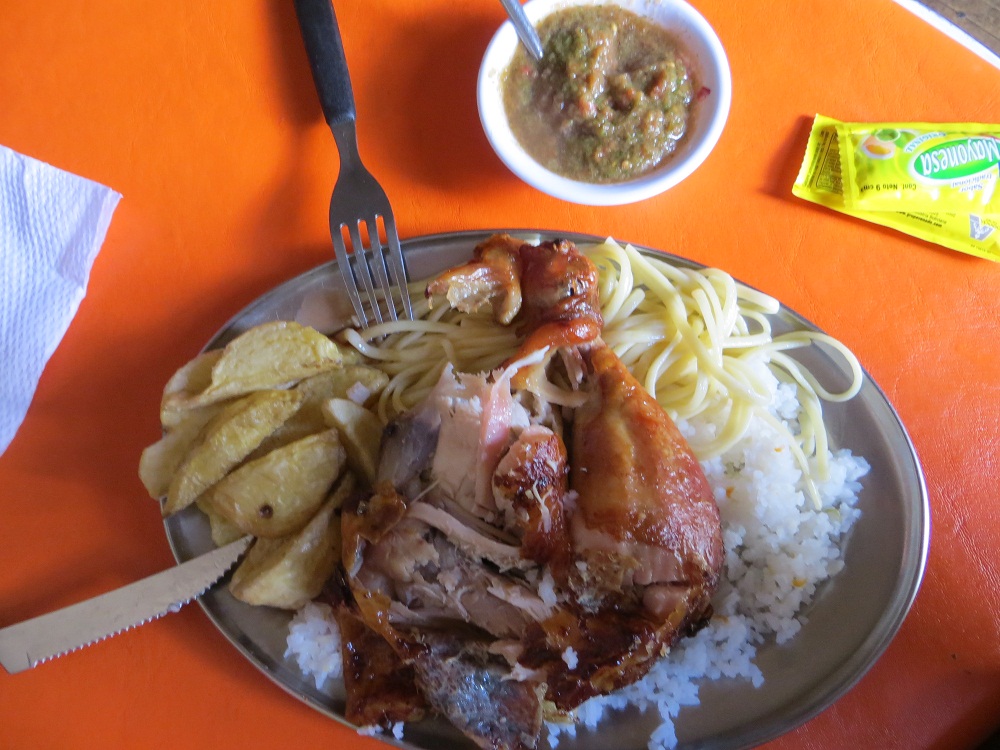
Lunch: chicken and 3 starches
|
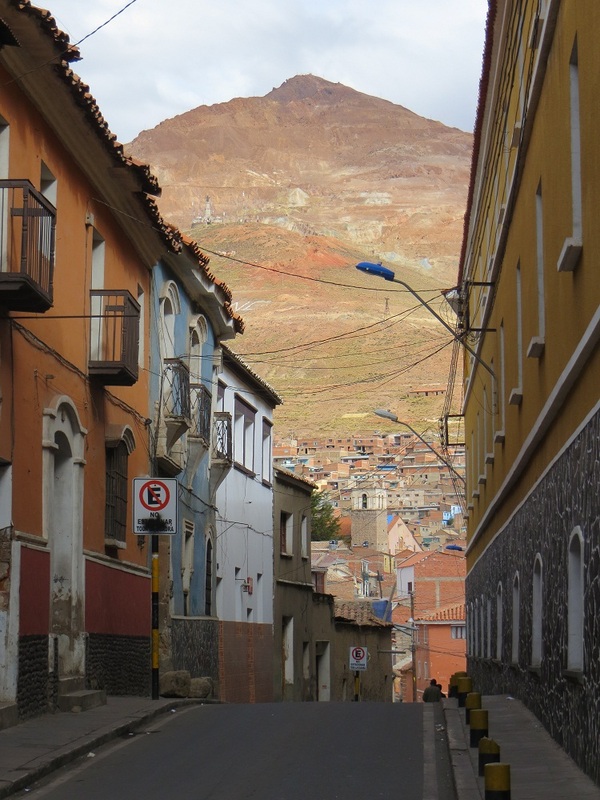
The beautiful streets of Potosi with a backdrop of Cerro Rico, riddled with tunnels from centuries of silver mining.
| We were uncertain whether or not we wanted to visit the working mines; where entire families work under atrocious conditions and too often perish, either in the mine itself or from ailments associated with it. We opted to join the tour for its initial visit to the Miner Market, where one could buy gifts for the miners such as coca leaves, dynamite ($3.50 a stick) and alcohol (96%!!!), and to visit the place where the Ore is initially processed (I would call it a factory but it does not qualify, it barely held on to the roof). We entered the mine for a brief scout around, met with some miners and left in a hurry when we felt 5 explosions that literally had the earth falling from the walls around us. The miner said that it was an adjacent shaft about 50 meters below us. Enough said. Spent the rest of the tour sitting on the side of the hill watching the comings and goings of the miners pushing the ore carts and poking around the discarded pilings for pyrite.

Big bags of coca leaves
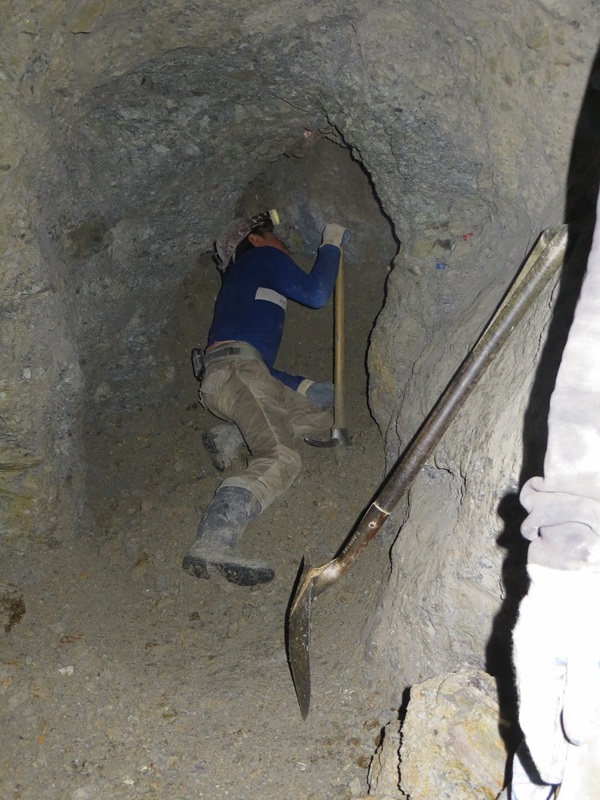
14 year old boy working his family´s silver mine
|

El Tio the god of the mines. Miners make offerings to El Tio every Friday for safety and prosperity.
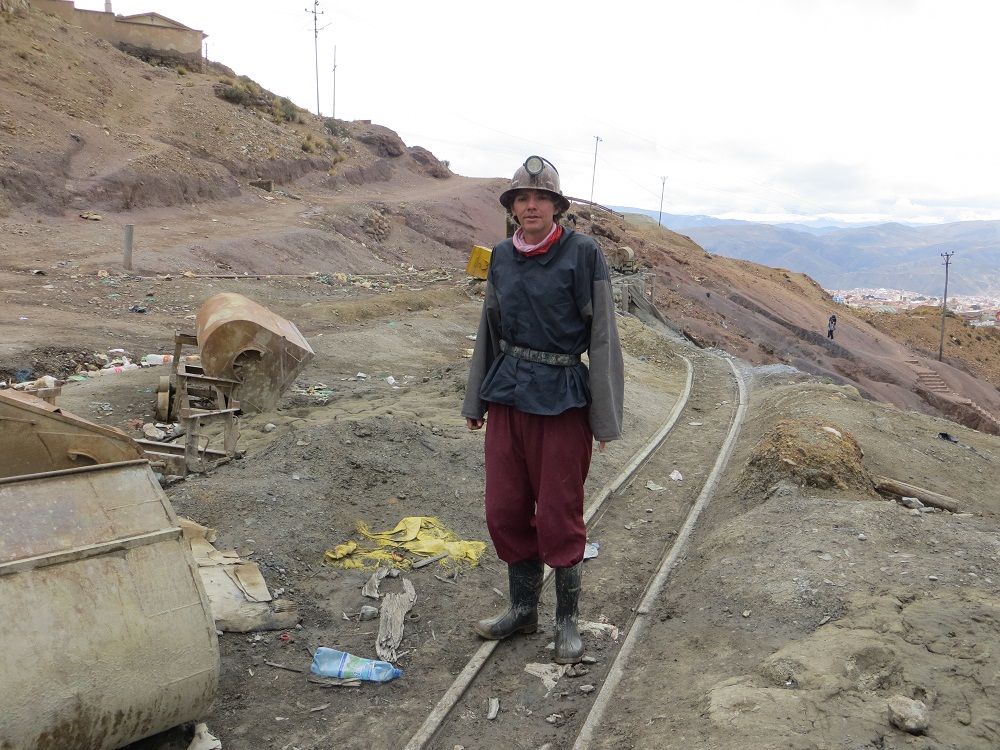
Dale happily fossicking for fool´s gold.
|
Abashedly we admit that we did not know much about Bolivia before starting our trip. A large swath of southwest Bolivia is desert. Not just any desert but altiplano, some of the highest in the world at around 3500 meters in elevation. We got to know this region on an amazing 3-day 4x4 tour. We saw volcanoes, lakes, thermals and geysers, flamingos, llamas, viscacha and vicuna. We visited an island of cactus in the middle of the salt flat, and got to have some fun taking pictures without perspective, more challenging than we imagined. Click on a photo to see a caption.
After moving slowly through Patagonia it feels like we have been absolutely flying through the northern section of Chile. But when we reached San Pedro (a town located in the world´s driest desert) we had to take some time, there was just so much to do. Instead of booking onto a tour, we decided to go the more adventurous route and rent a car. After some serious haggling we managed to get the car price down 40% and we got to cruise around in Big Red. This really left us feeling local as all the cars in town... well in all the towns we visited north of Santiago, are red 4X4 trucks - something to do with mining towns and visibility.
First stop a little town of Chiu Chiu where the oldest church in Chile is located. True to experience the Church was not open during the posted opening hours, but we did get to enjoy the view from outside. Crazy to think that this church was built before the USA or Australia were even close to becoming countries. Next stop Pukara de Lasana a 12th century native fortress, there were ruins and petryglyphs all through the valley but we still were not prepared for the size of this site, and we had it all to ourselves. And finally we ended the day in a tiny village of Caspana. It felt like we had been transported back in time, the villagers were still using the terraced farming sites utilized hundreds of years ago by the Incas! Plus all the houses were made of stone or mud and straw, it made for quite the cold night!
We were up before dawn to make it up to 4500 meters (close to 15,000 feet) to visit the El Tatio Geyser field. The highest geyser field in the world. Up that high, before sunrise it was freezing, literally. If the water wasn’t boling it was ice! It was a beautiful sight with all the qeysers sending up huge plumes of steam. It was a tad concerning how unregulated it was. Where ´walkways´were established they were most often pockmarked with little bubbling pots of trouble. Our interpretation of the words of advice given in Spanish when entering the area: “walk where you like, just be careful because the ground might break below you feet and you could be badly burnt.”
Once the sun rose and lit up the valley all the tourist trucks left and we were the only people in the park!!! Within 15 minutes we saw a beautiful fox, dozens of vicuna, and to top it off we spent close to 2 hours watching the antics of the viscacha. (In our Chicago days we spent a lot of time watching Planet Earth and this was where I first learned about these little creatures). They look a bit like a rabbit or a kangroo but are actually rodents! And they can only live between 3500 and 4500m in elevation, amazing little creatures. After finally tearing ourselves away from our private wildlife show we explored the surrounding area, found some flamingoes, and had lunch looking at over a dozen volcanoes, some still smoking!
As if that weren´t enough we also visited the beautiful Valley of the Dead in the Salt Mountains and found a wonderful spot to watch the sunset over the Valley of the Moon. (It sounds like we are living life in some sort of story book!)
Subsequent days were also highly enjoyable and included an early morning with more flamingoes, they are the funniest creatures when they fly, all legs and wings. An afternoon with more vicuna (Bek almost got trampled by a few) and a sunset swim in a salt lagoon (well it wasn’t so much a swim as a float since the super salty water propped us up).
Our final day we visited Chuquicamata the largest open pit copper mine in the world! 5km long, 3km wide and 1km deep. It was an impressive sight and difficult to really comprehend the size, in the photo the little toy dump trucks are actually massive – they can each hold 300 to 400 tons of rock!!!!
Overall it was an amazing few days in the desert. What struck us the most was the quantity and diversity of the wildlife in this desert. We saw more animals in one day in the desert than we had in 1 month in the forest! The world is an amazing place.
|












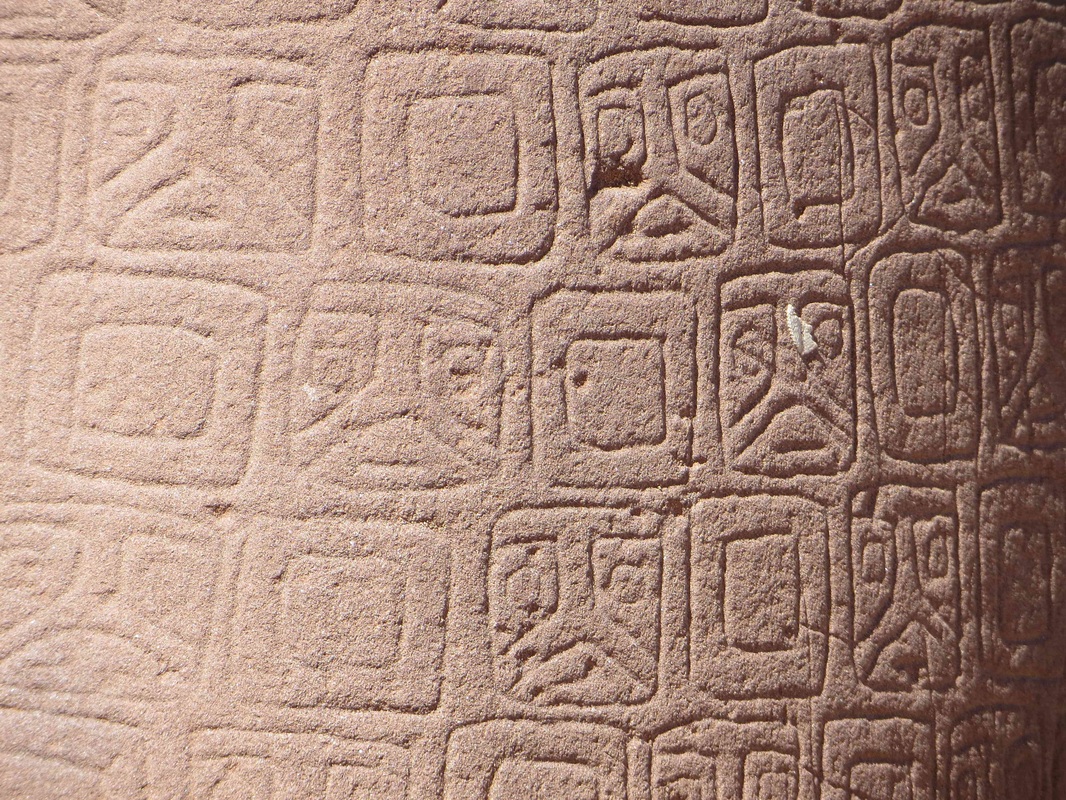
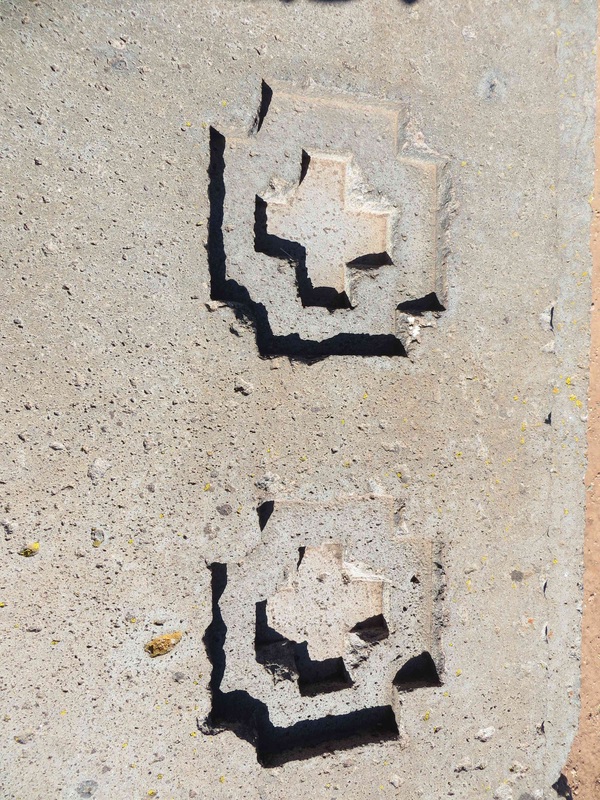



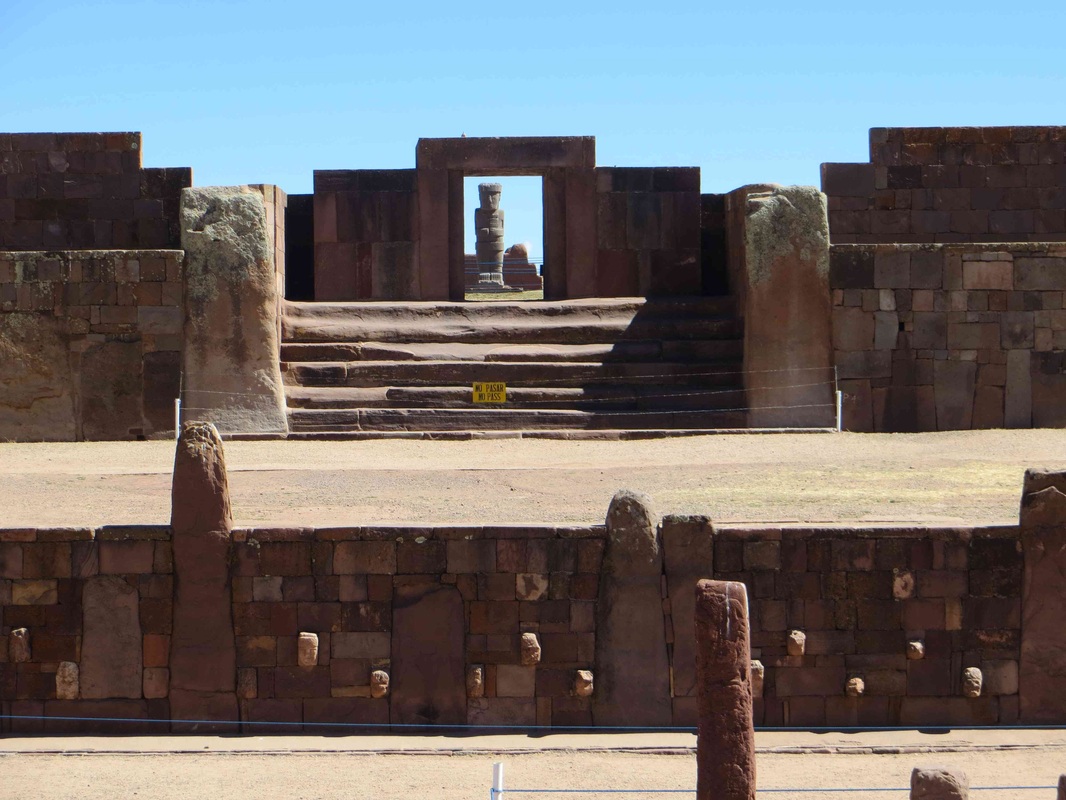
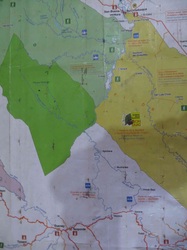


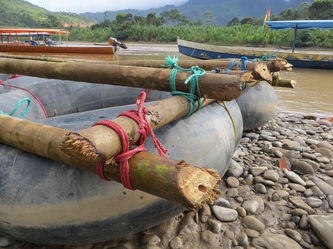
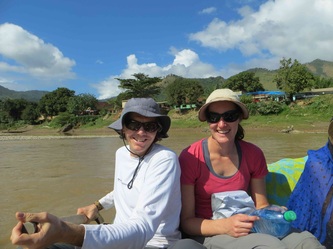
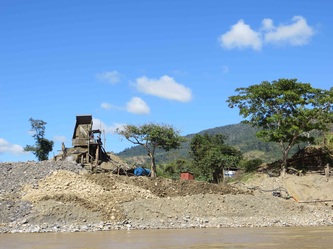
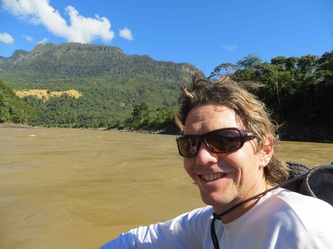
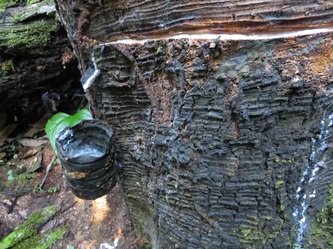
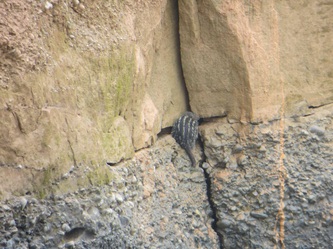
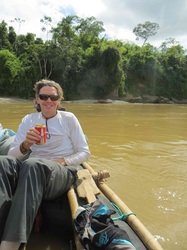
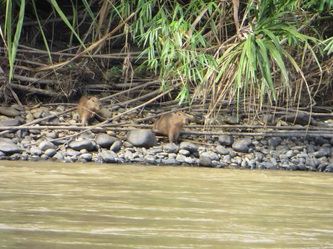
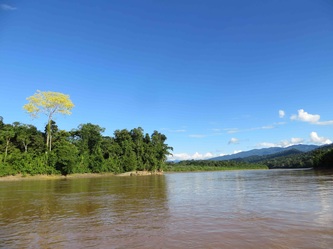


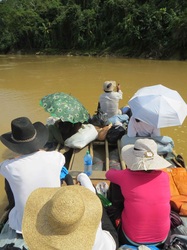
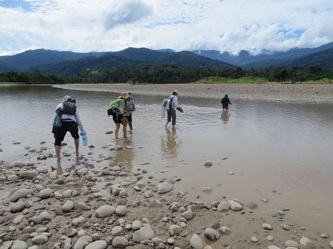

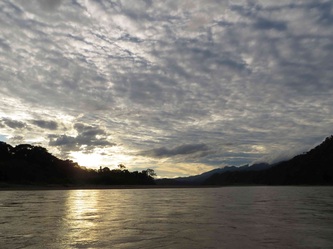


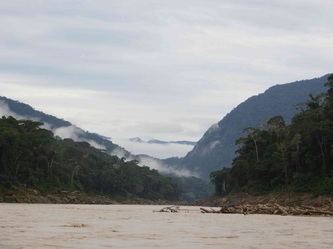



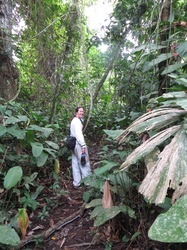
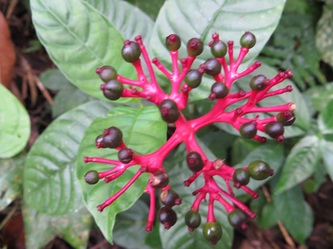
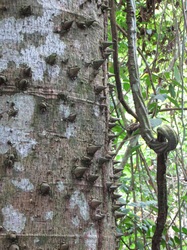

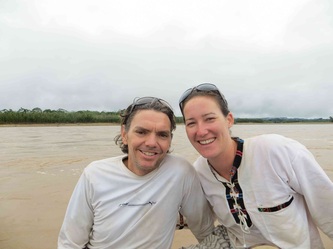
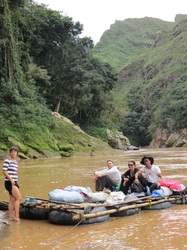
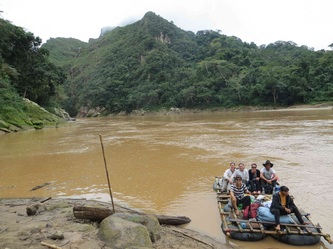
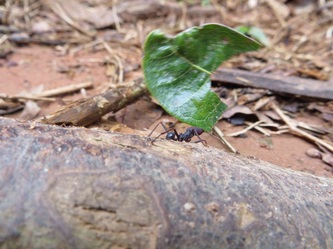
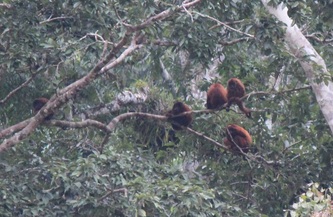





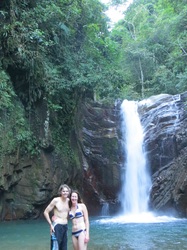


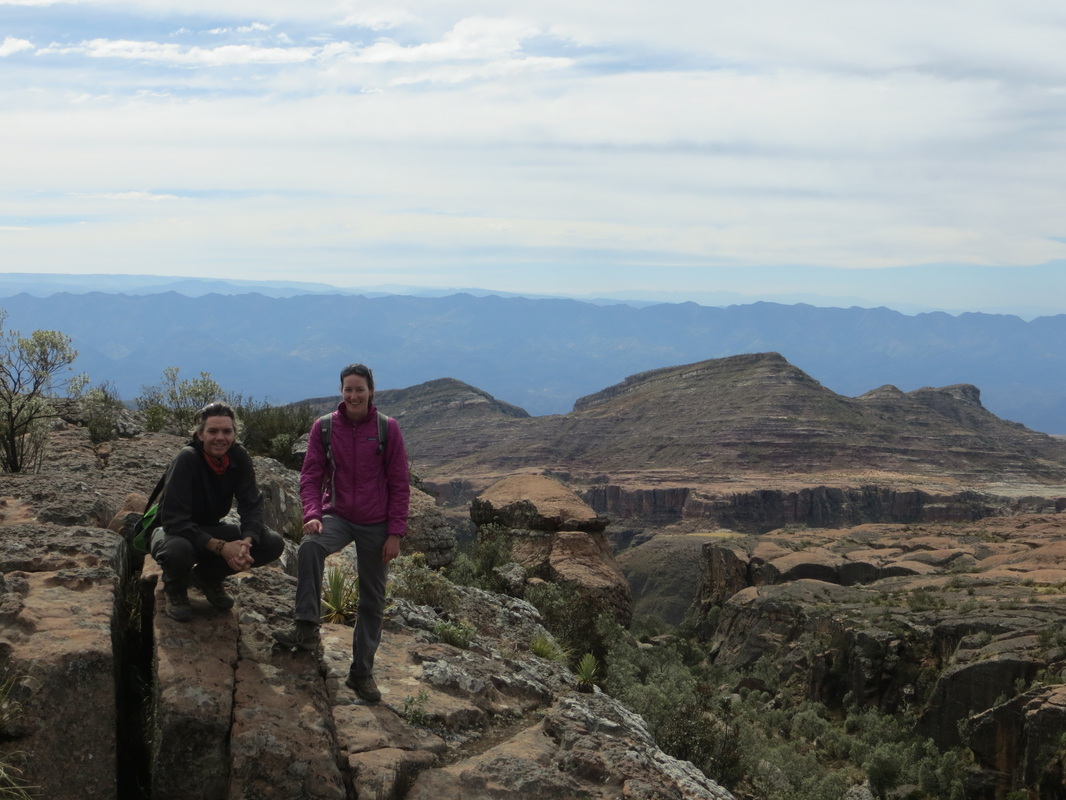


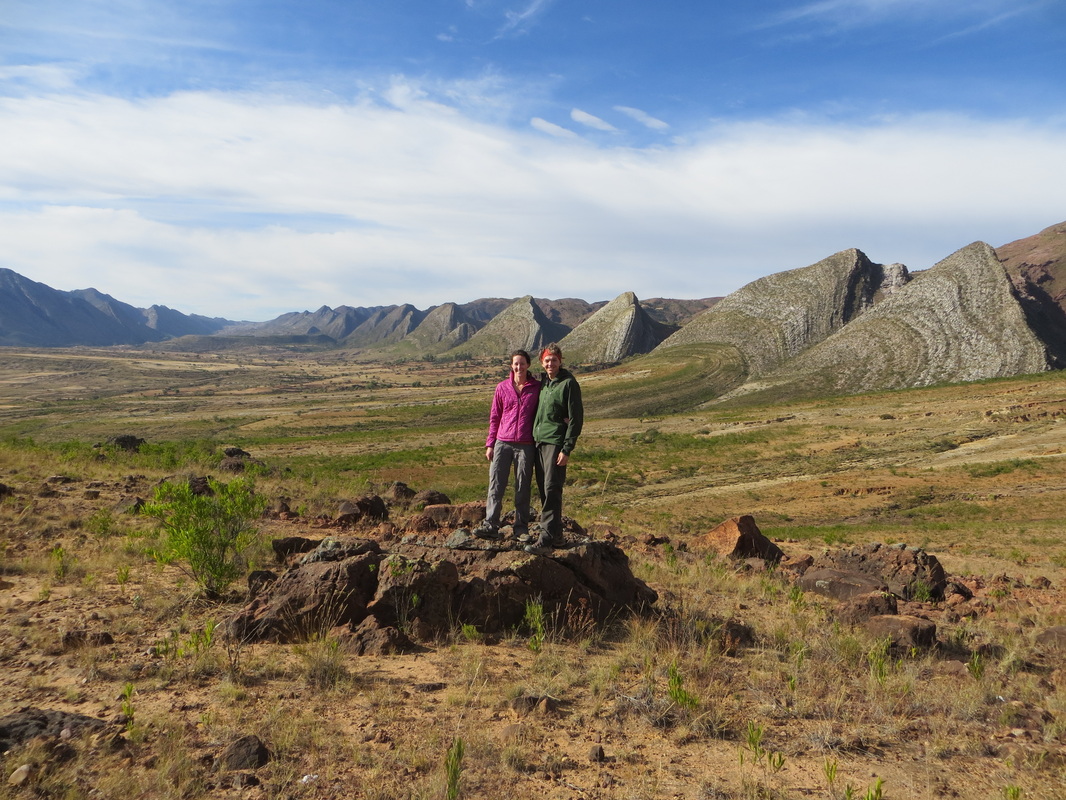

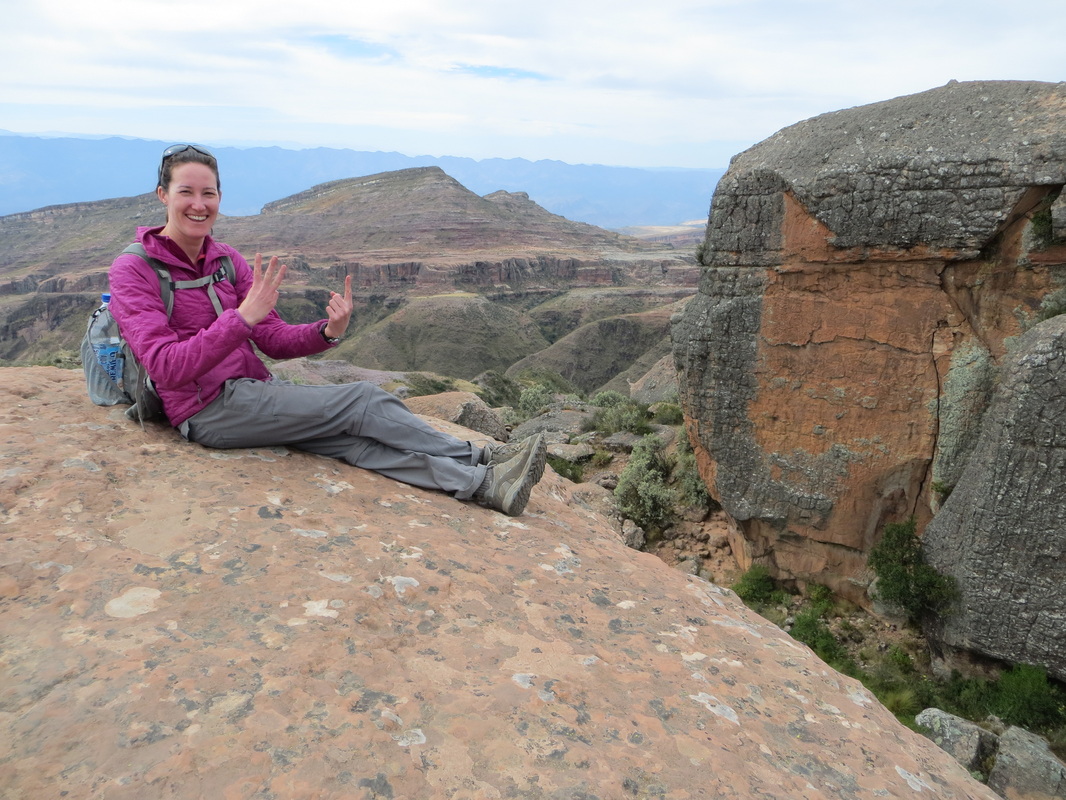
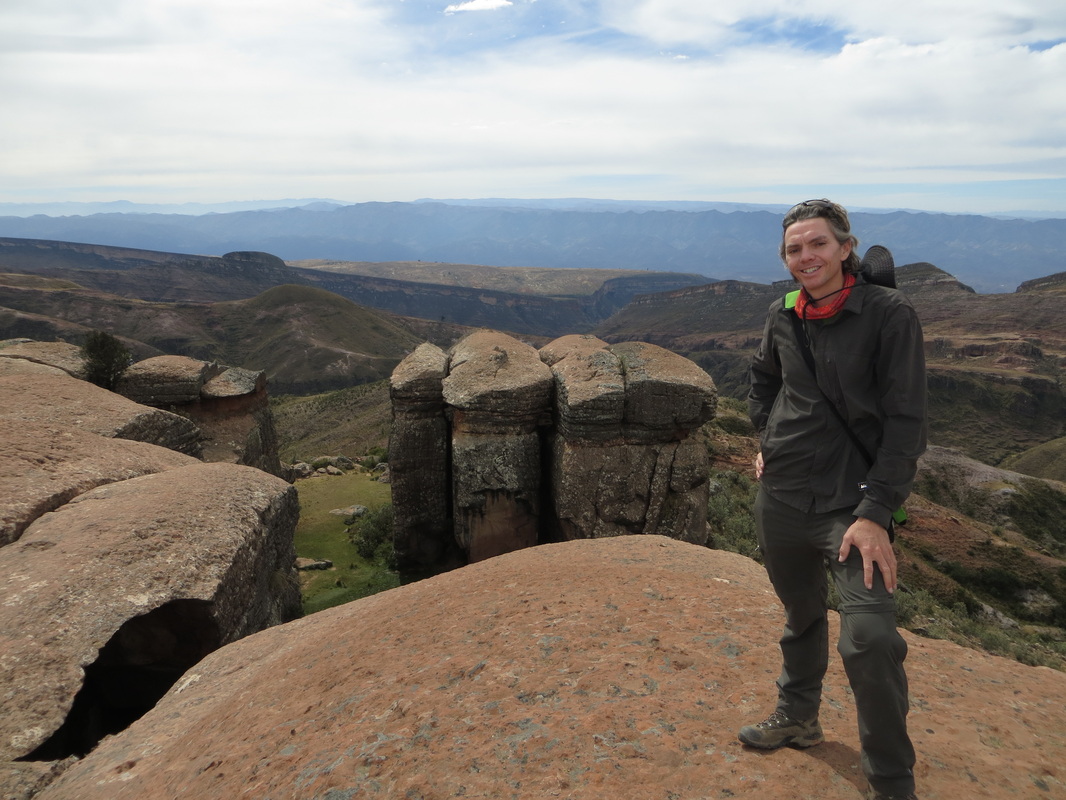




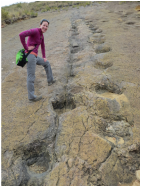
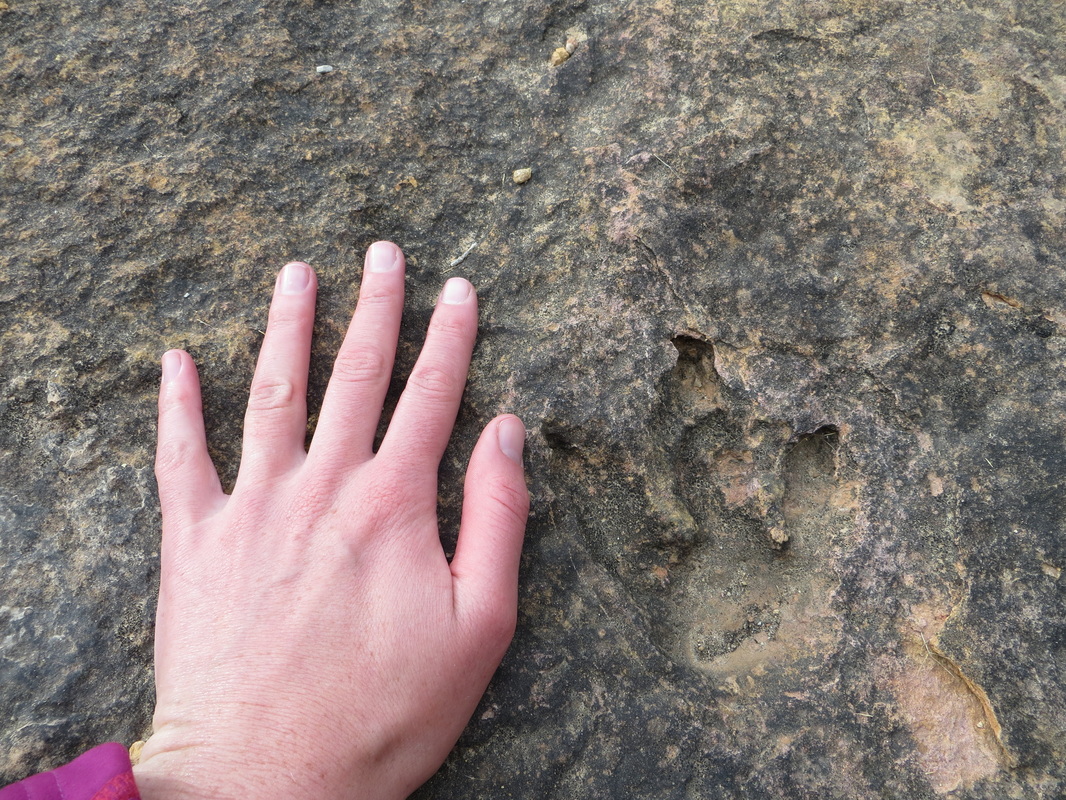

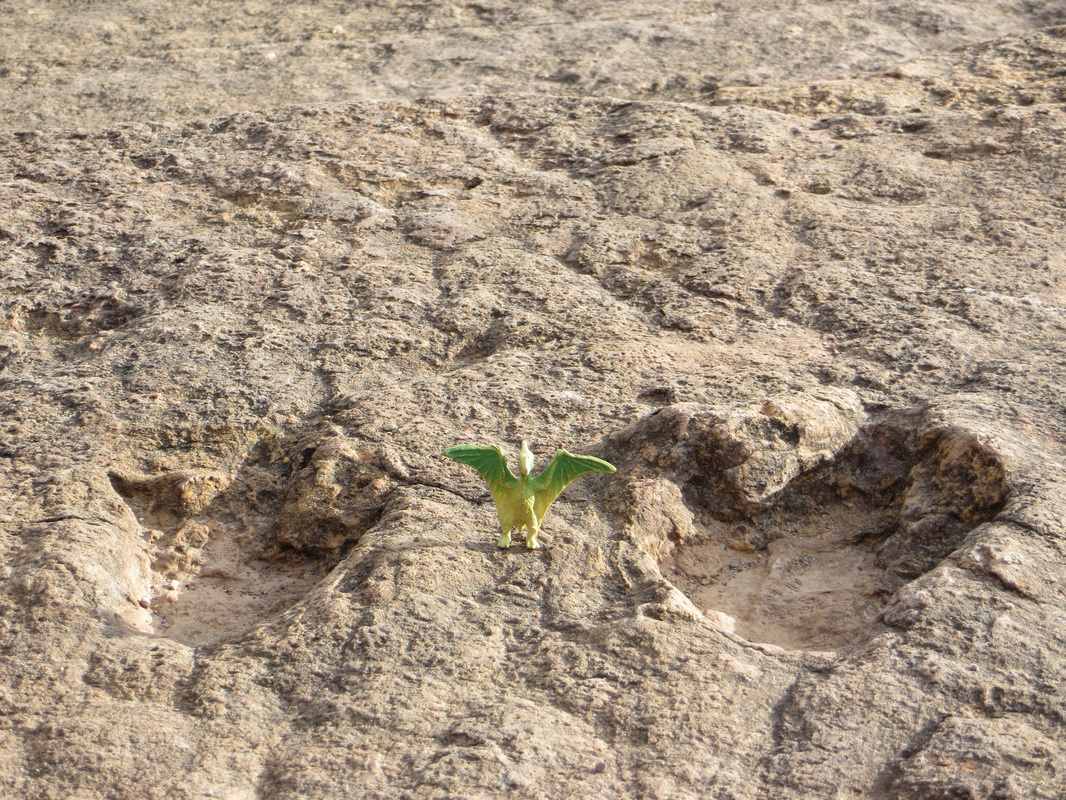

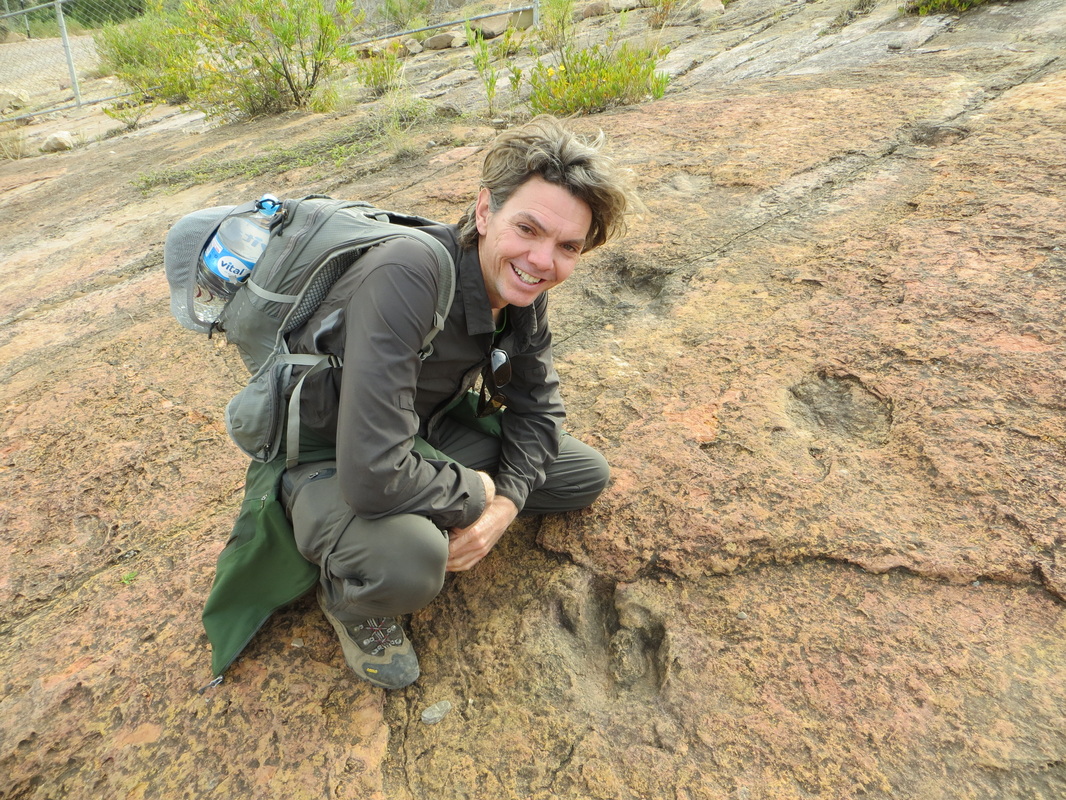

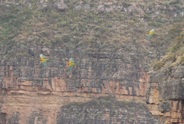
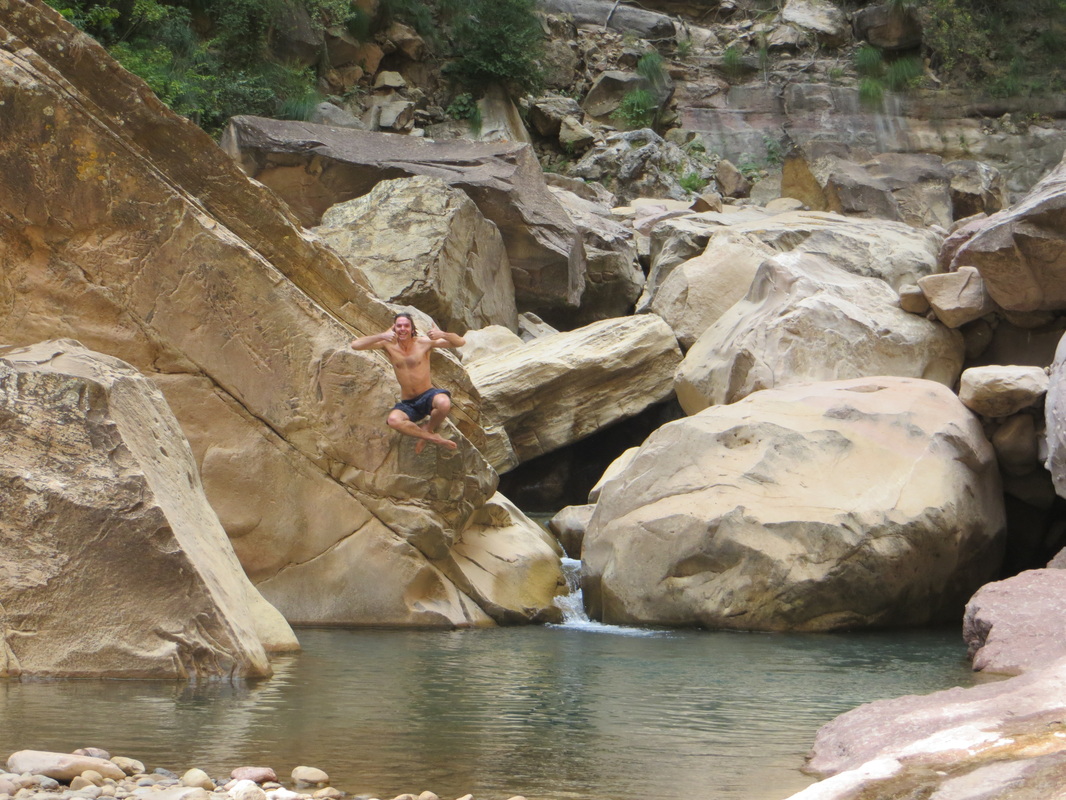
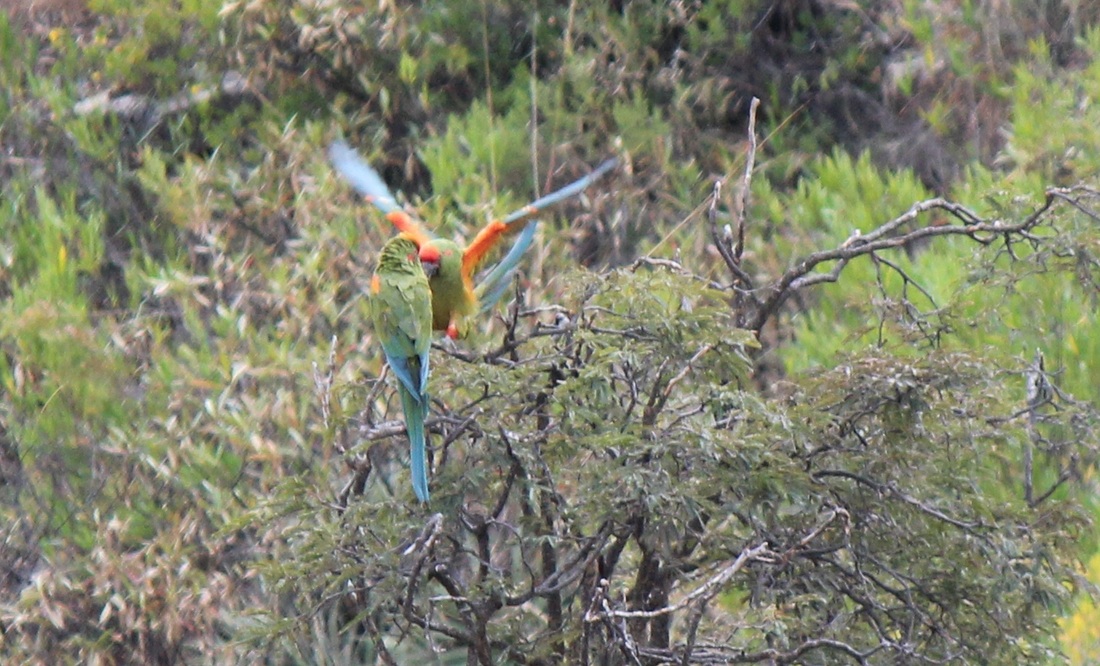
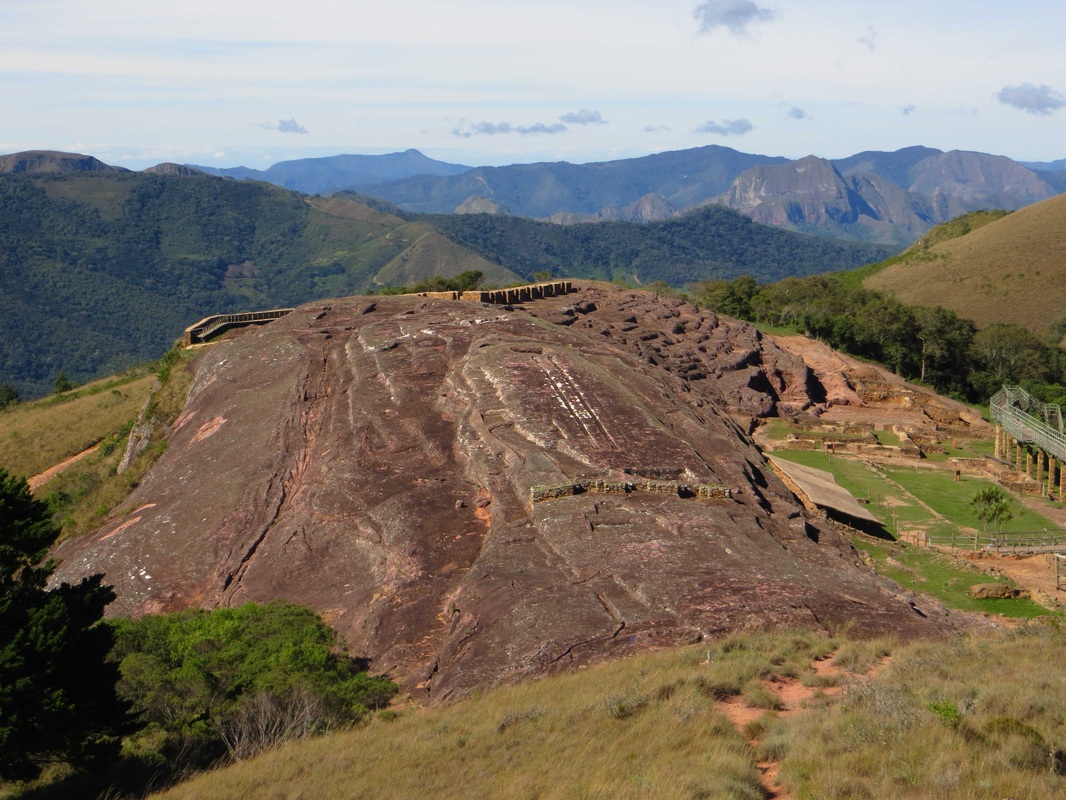
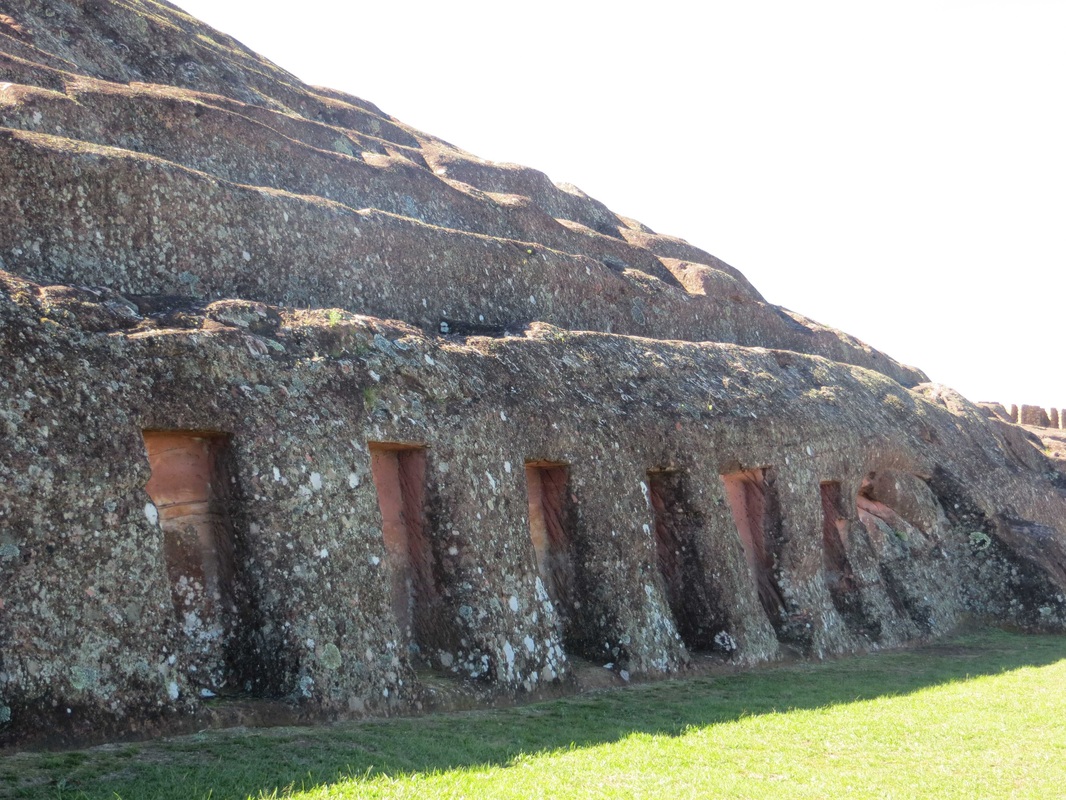
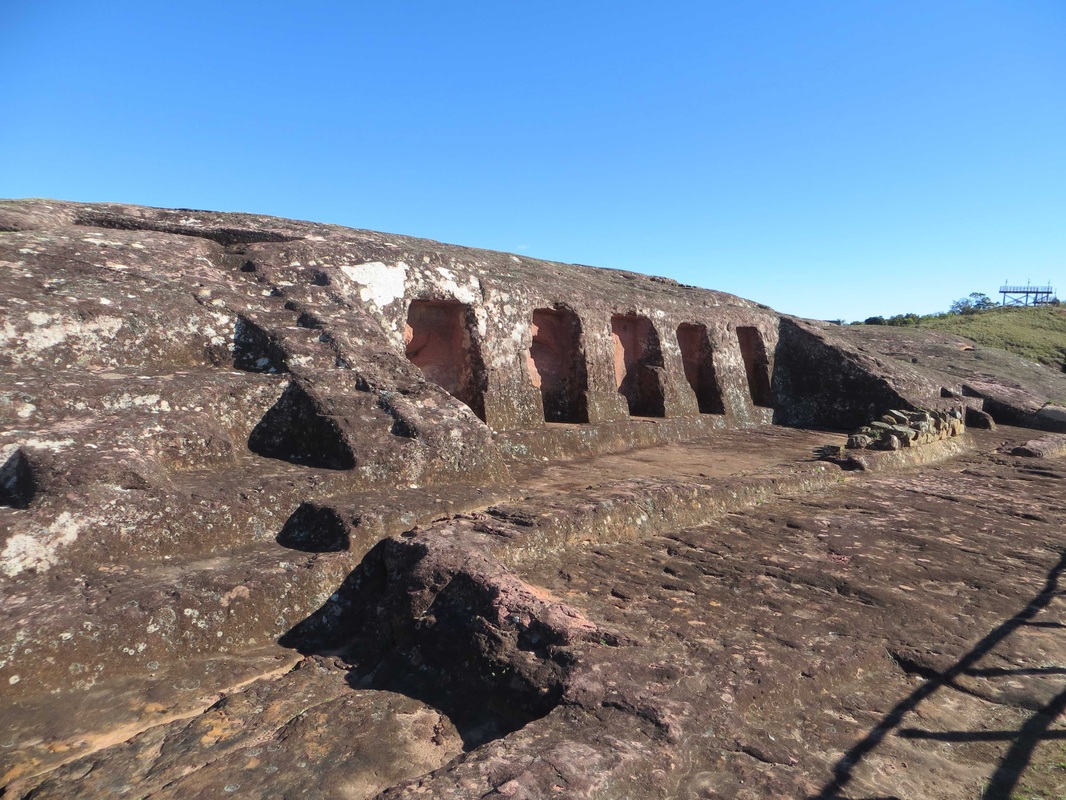
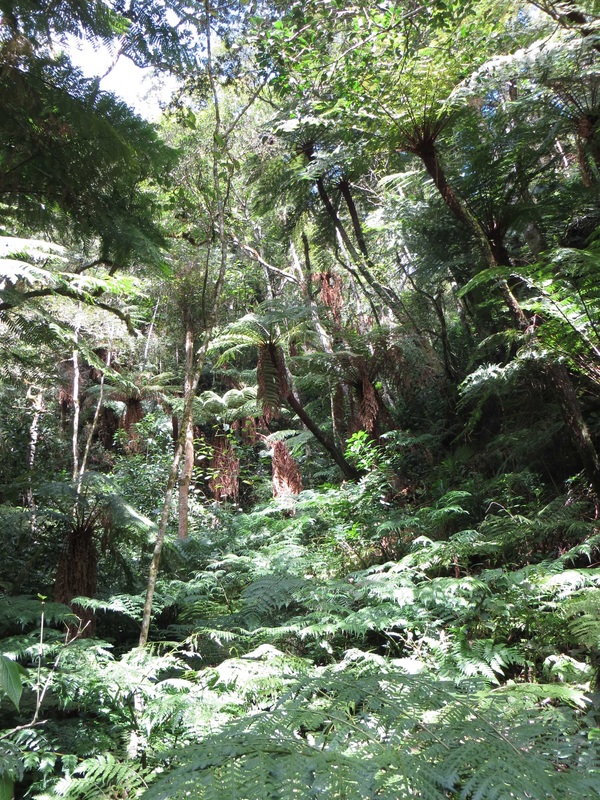
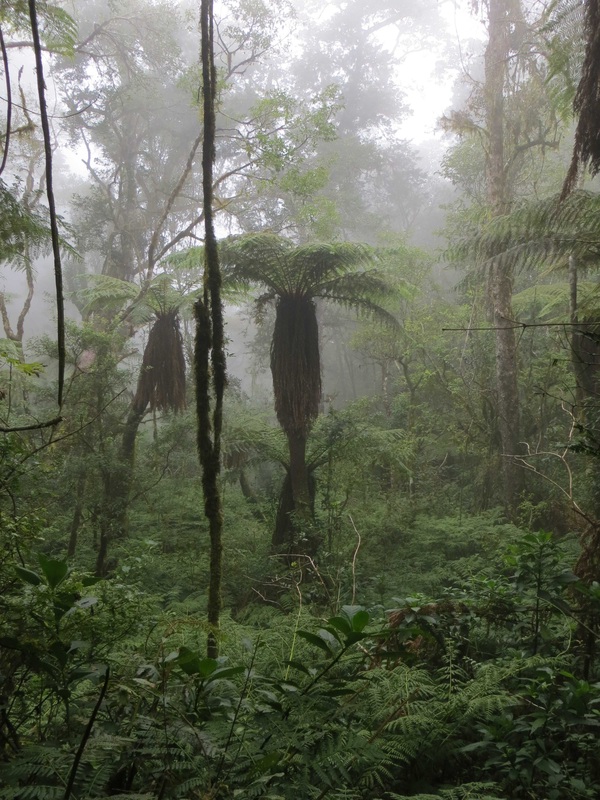

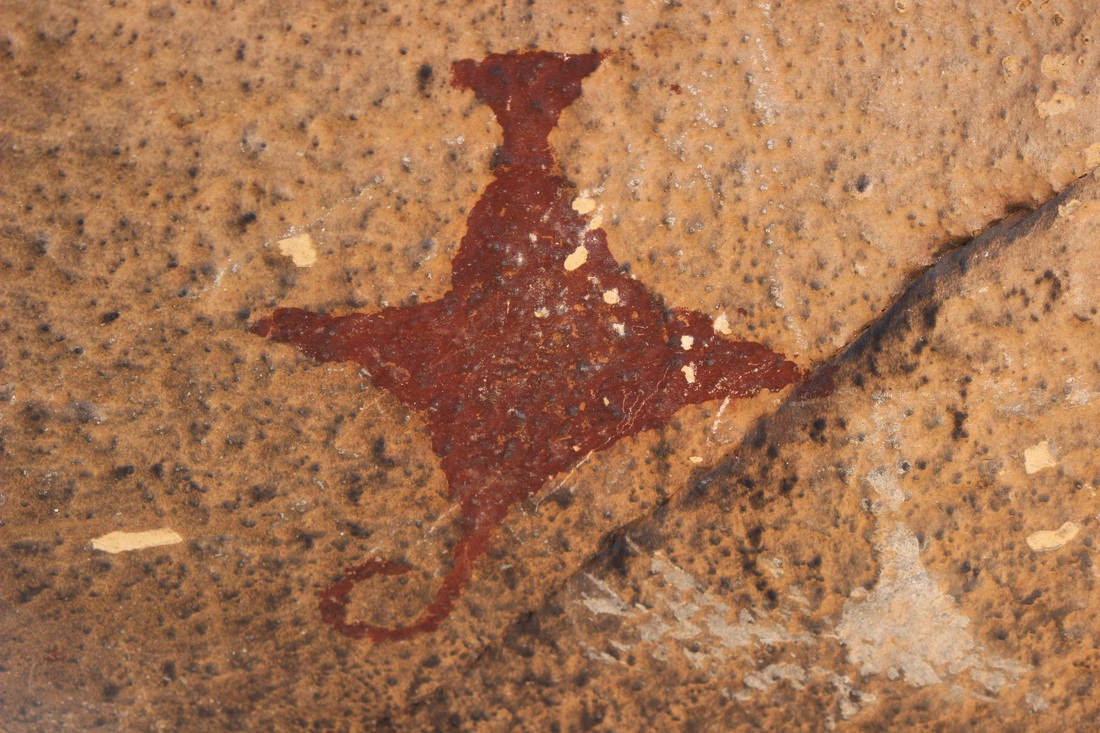
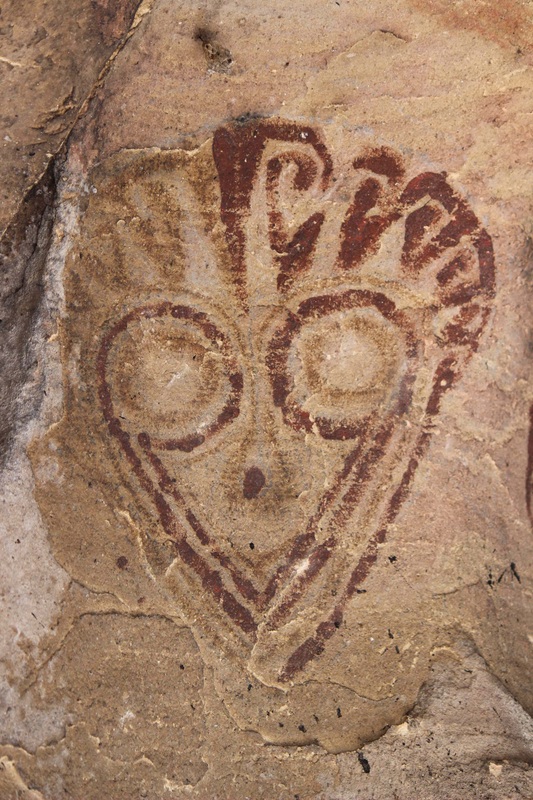


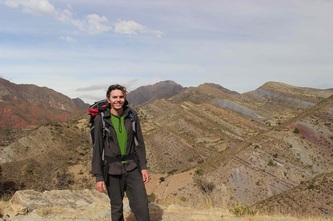

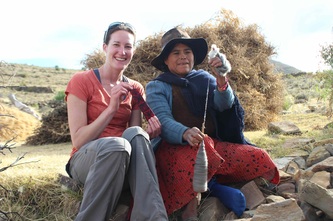
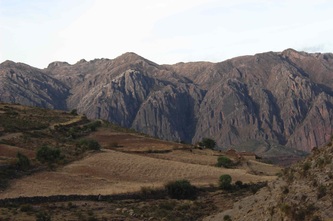


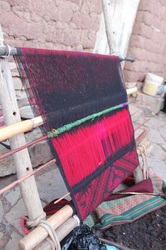

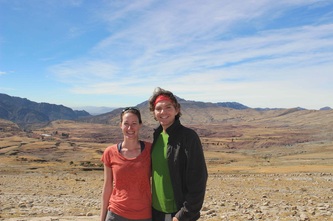
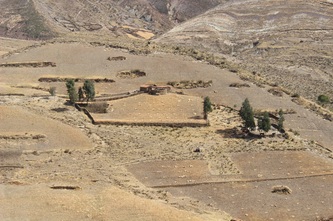
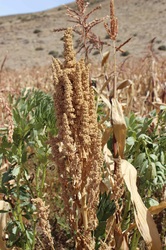
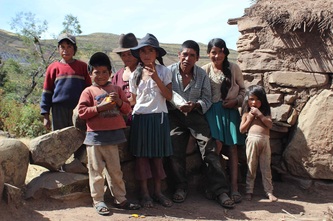
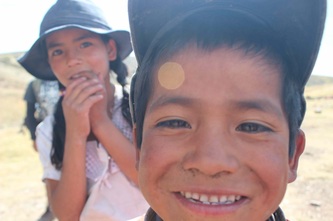
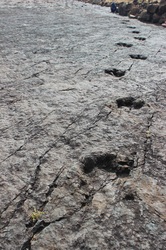
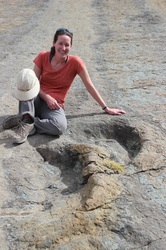

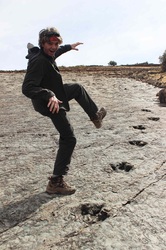



















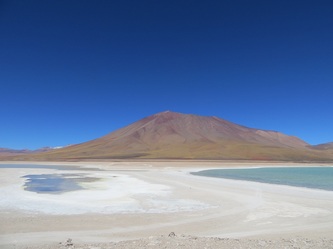
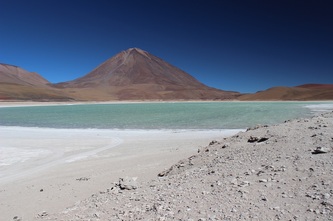
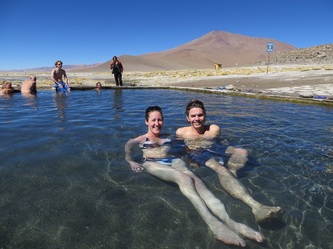

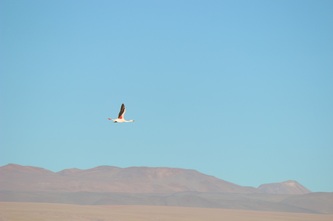

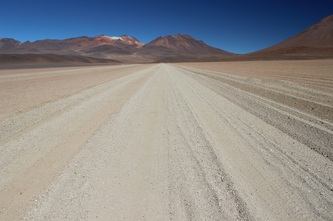


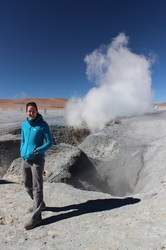

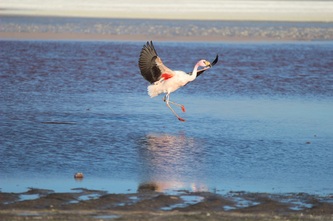


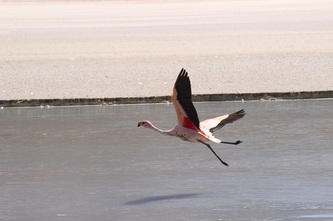
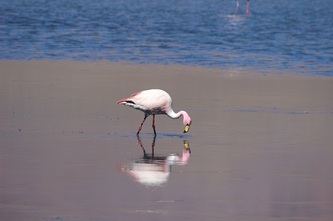
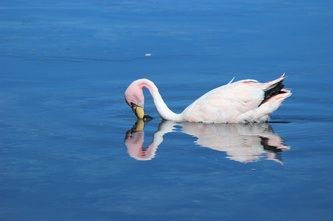

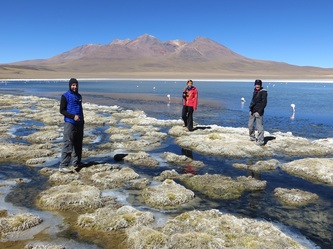

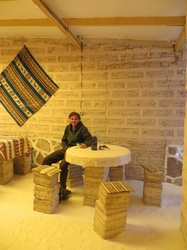
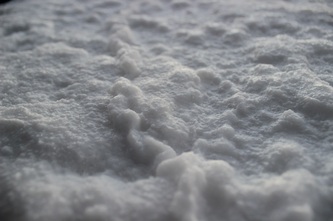
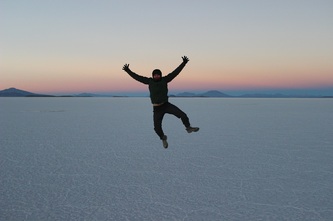
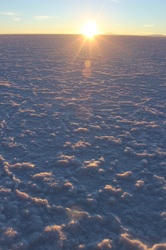
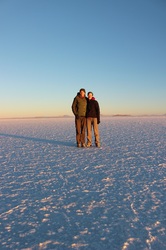



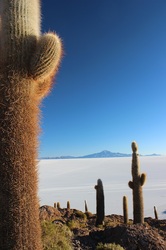


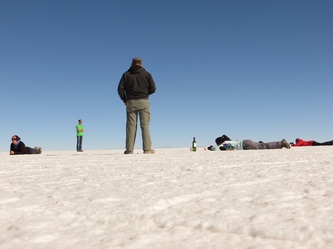
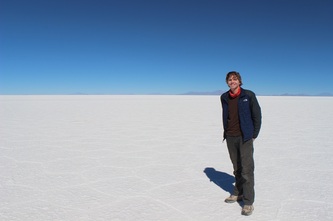
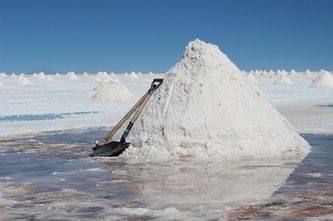
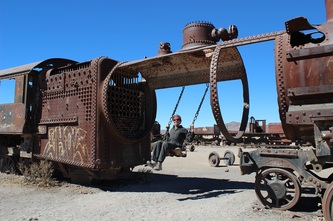

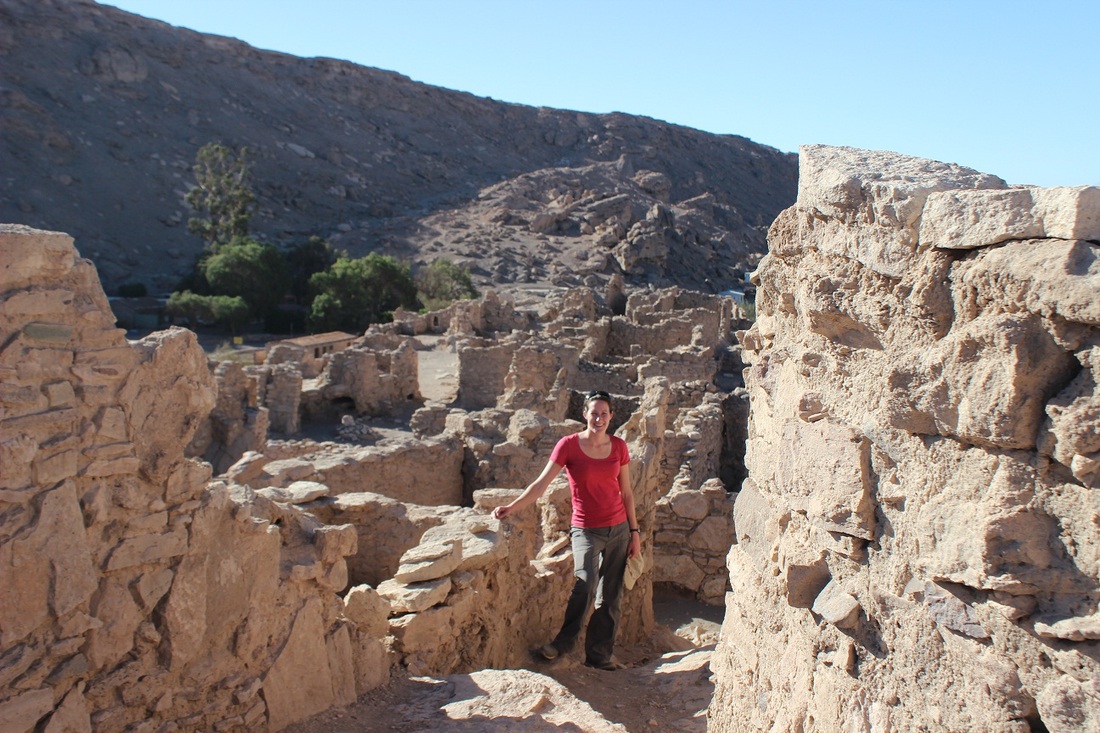
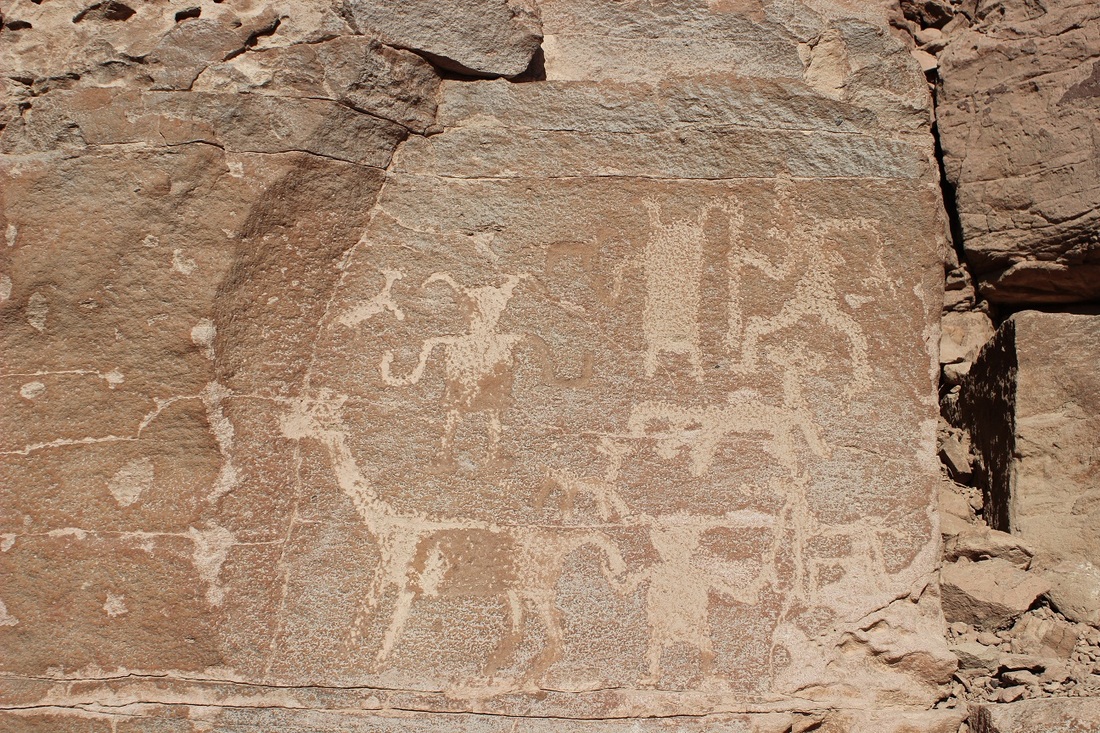


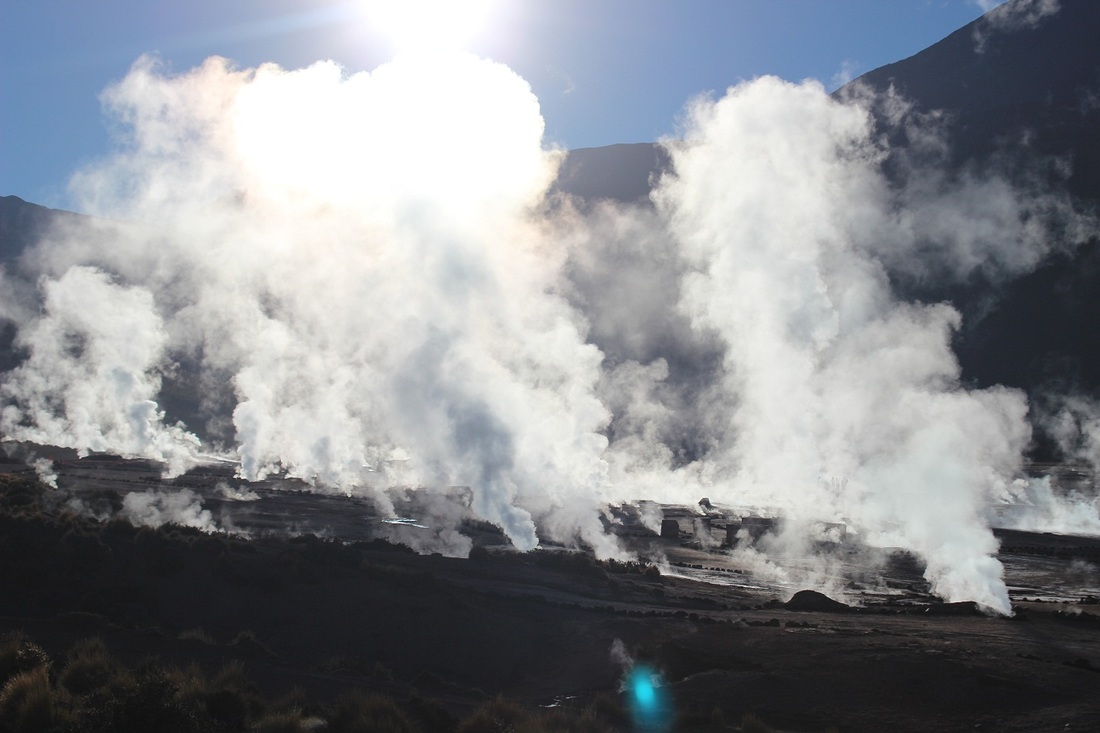

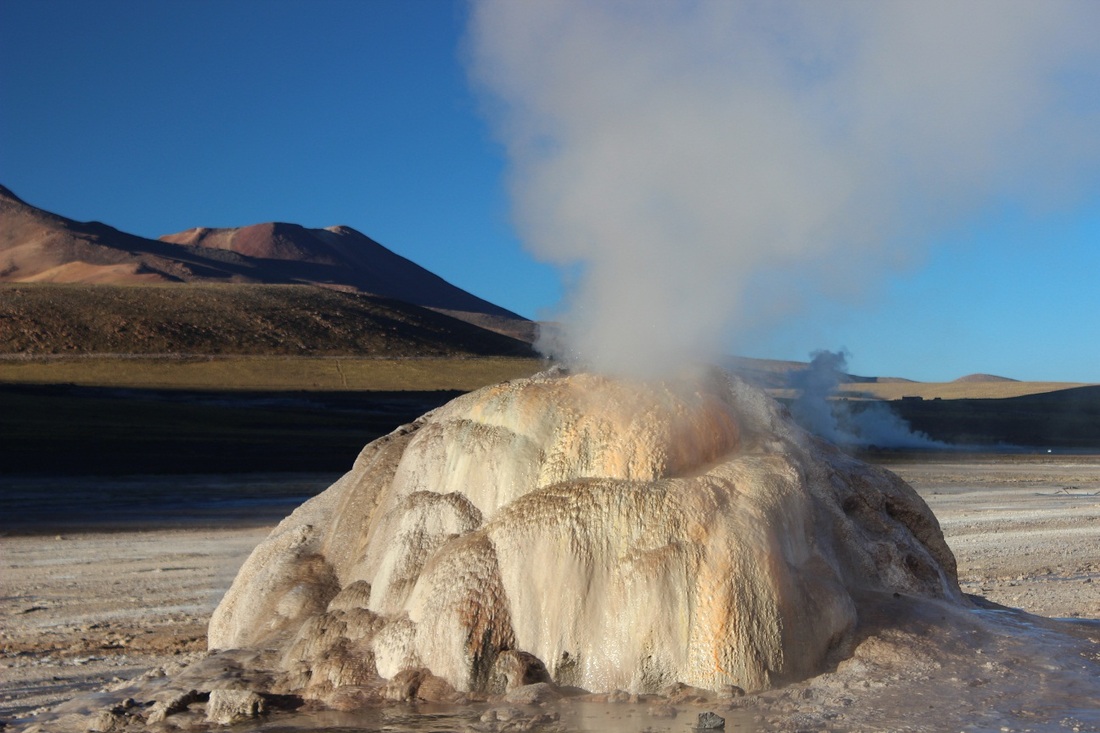
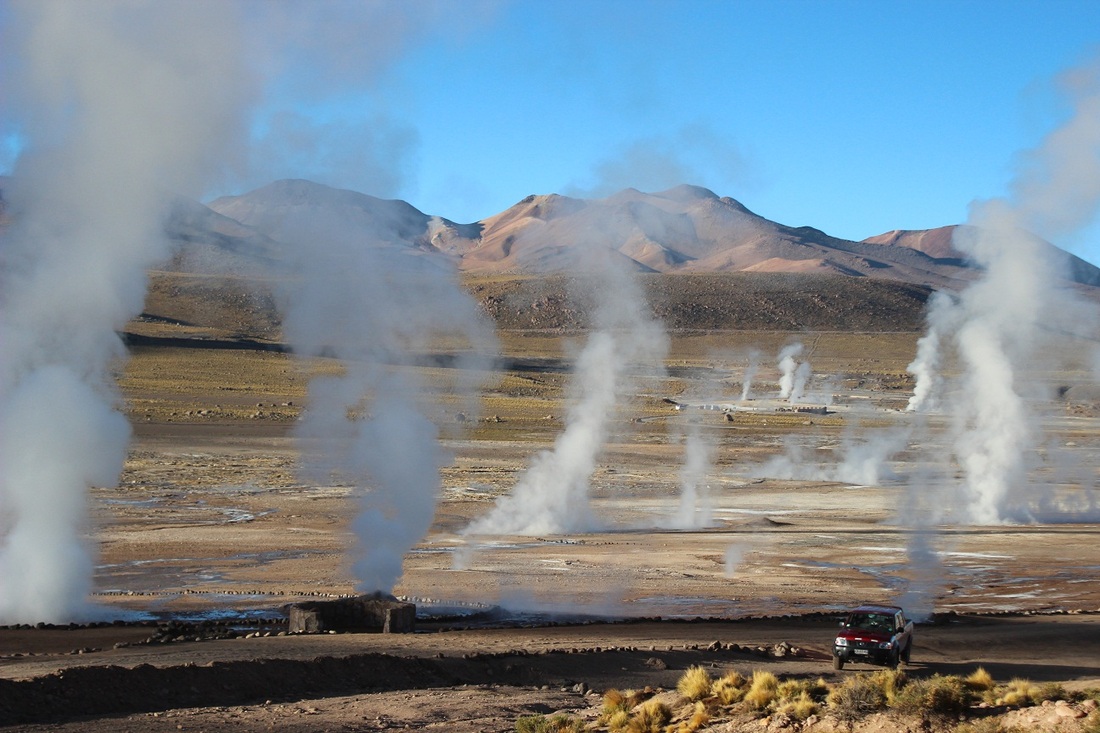
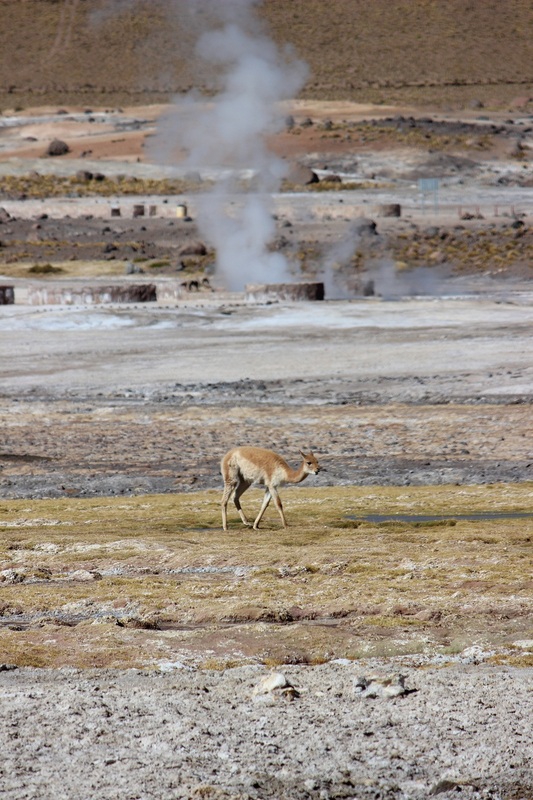
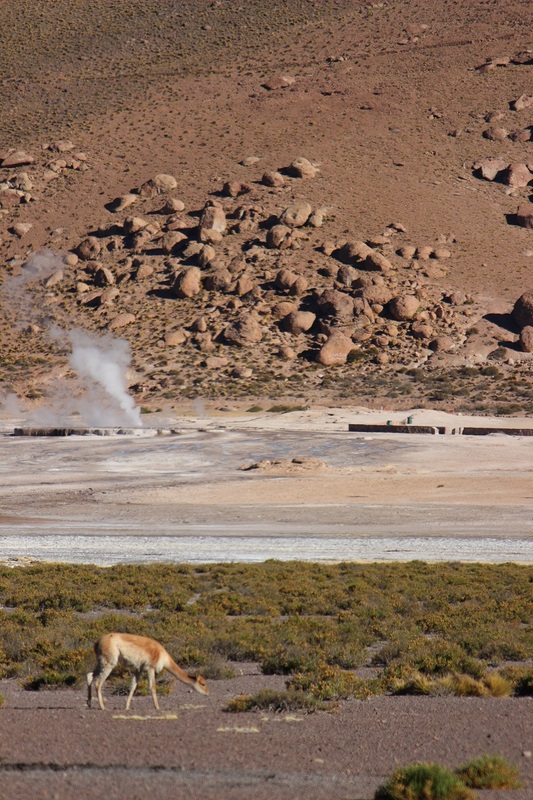
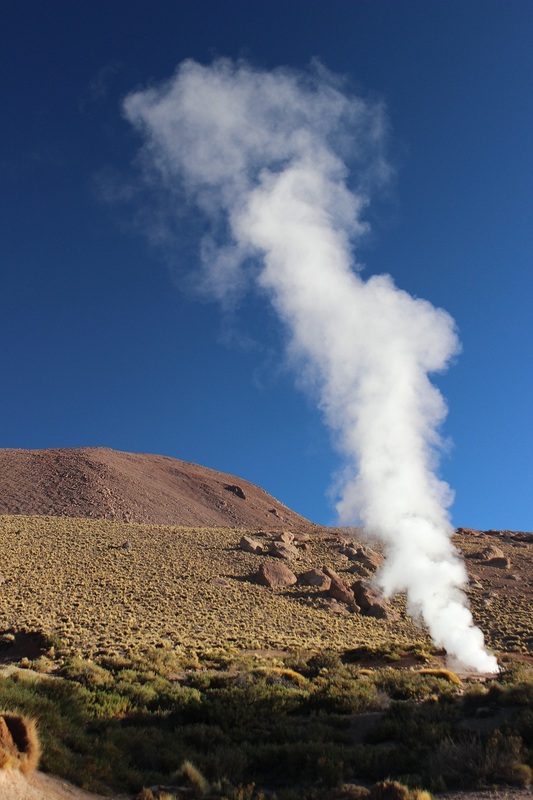


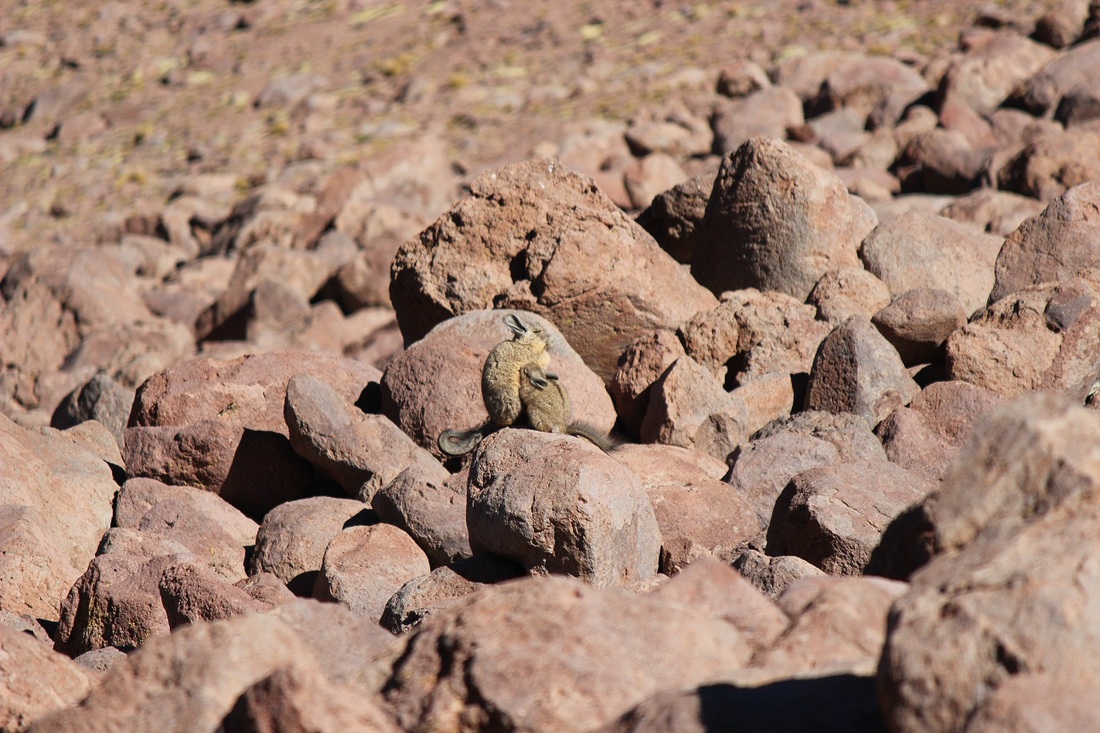

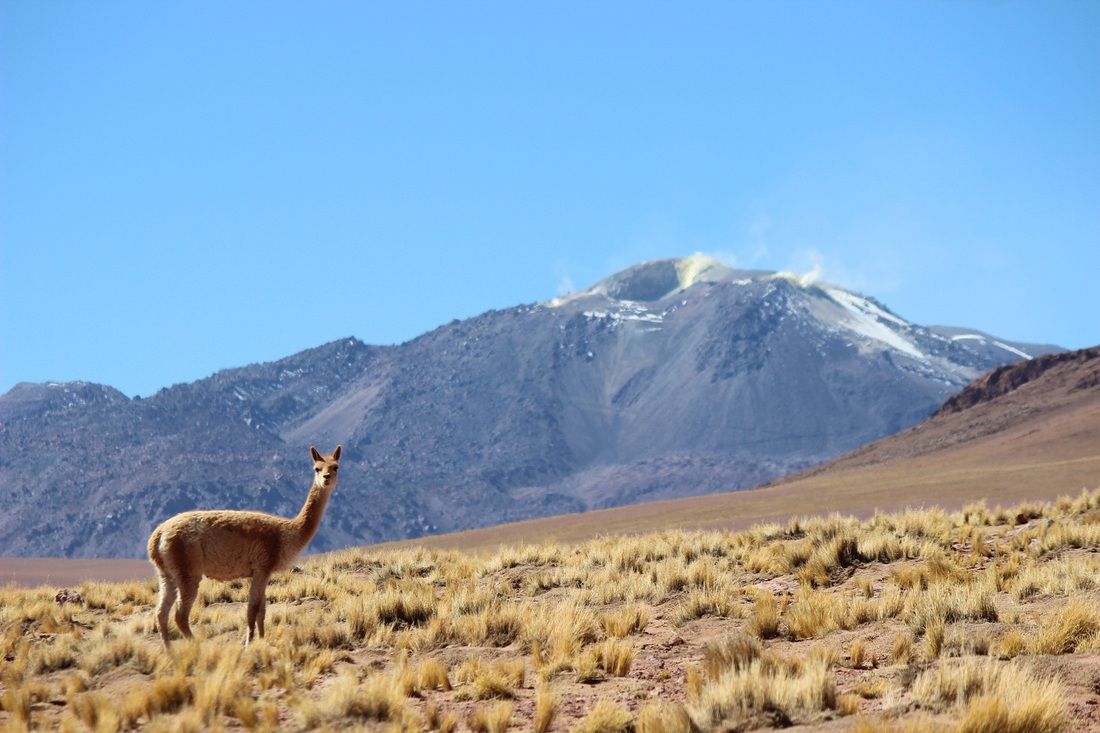
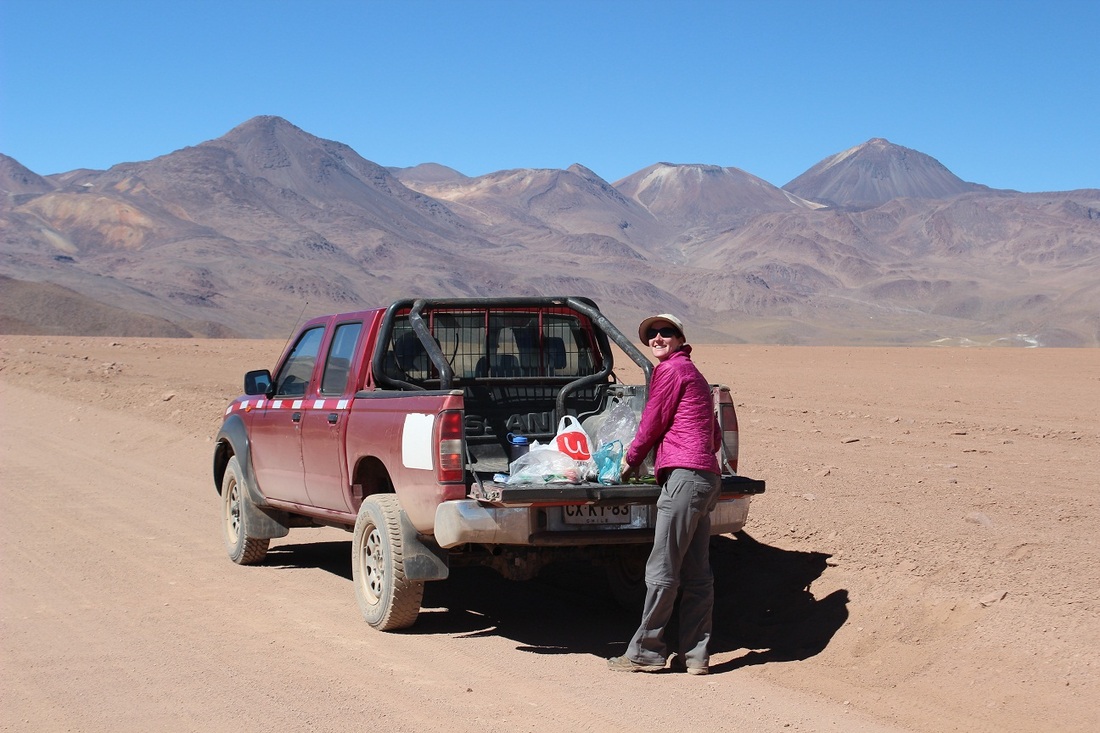


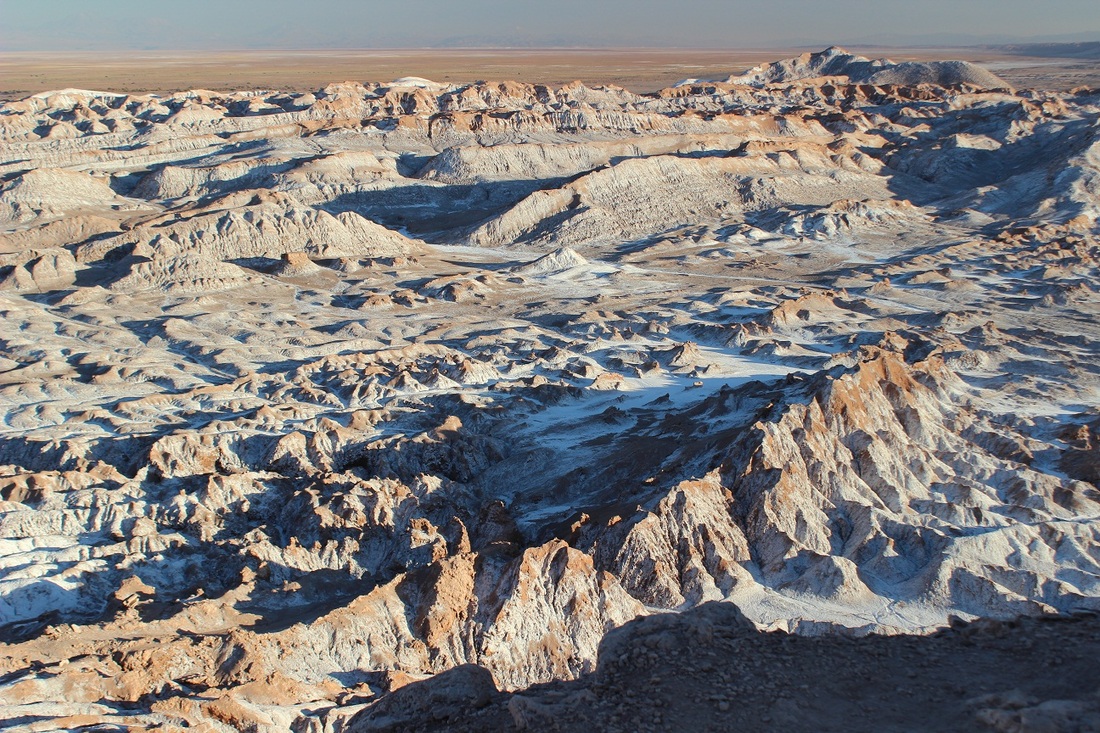
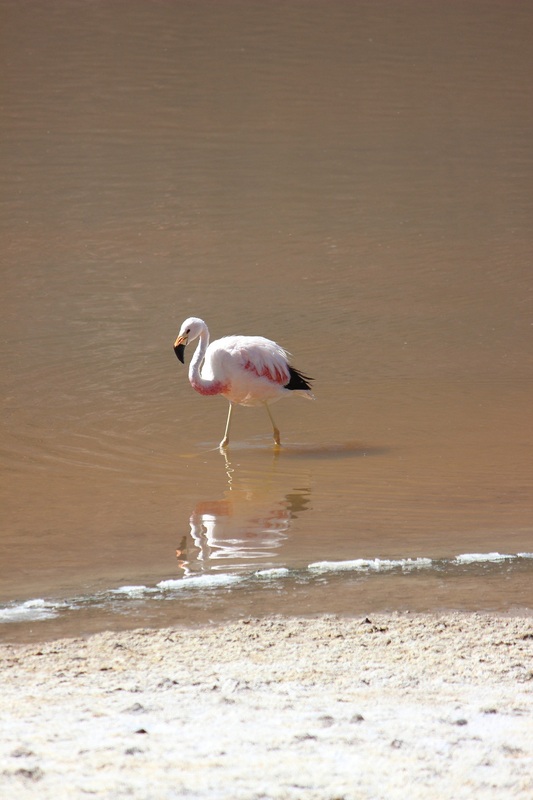
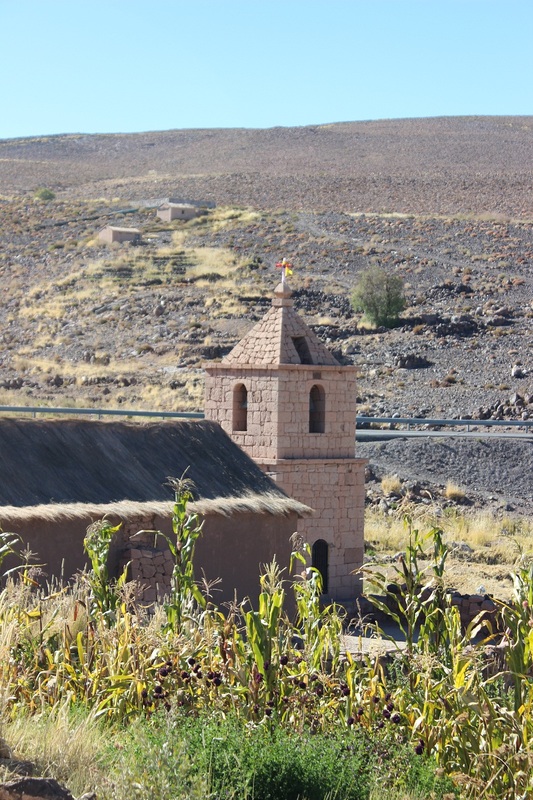
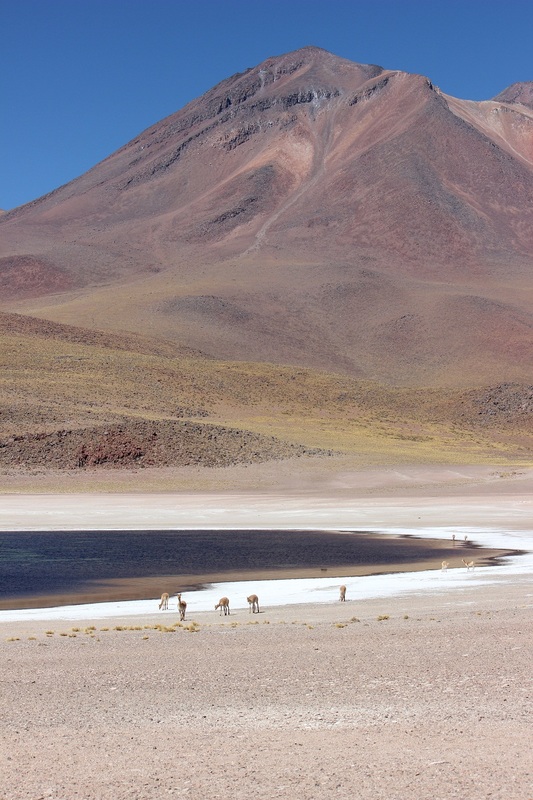
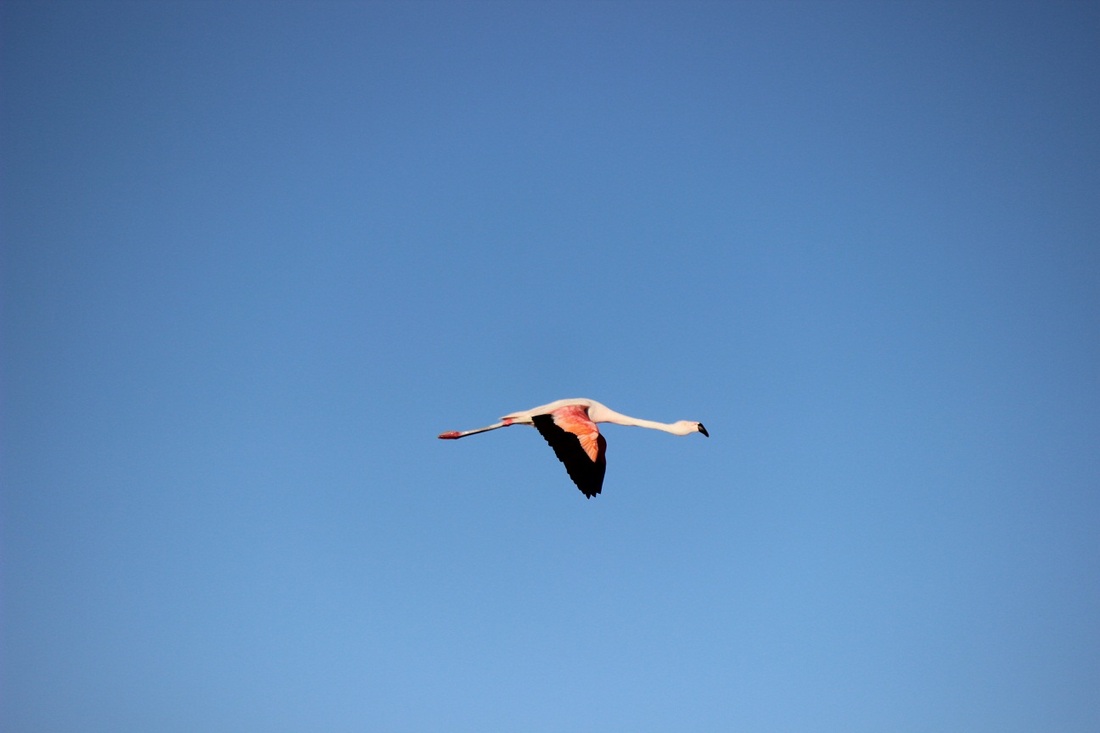

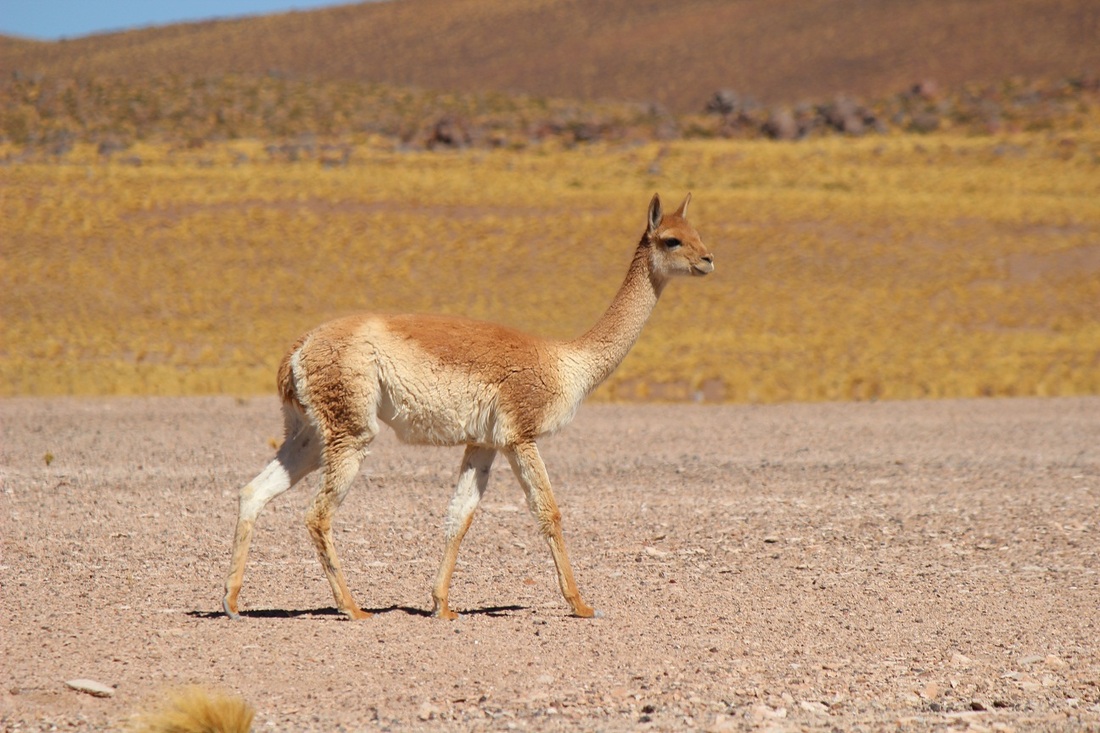

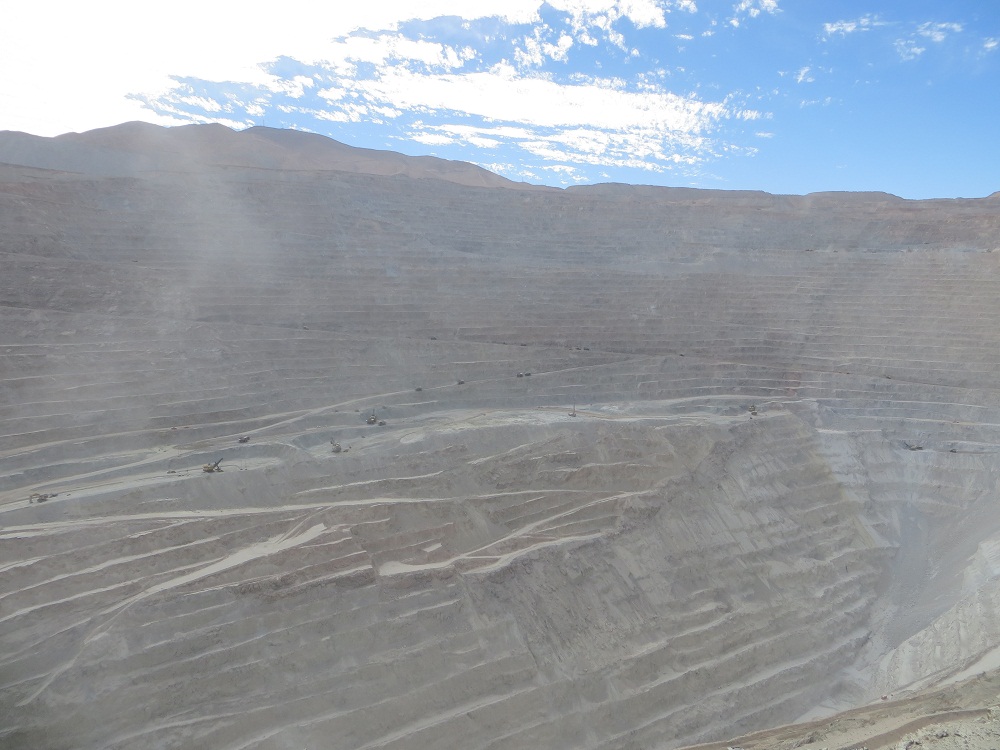
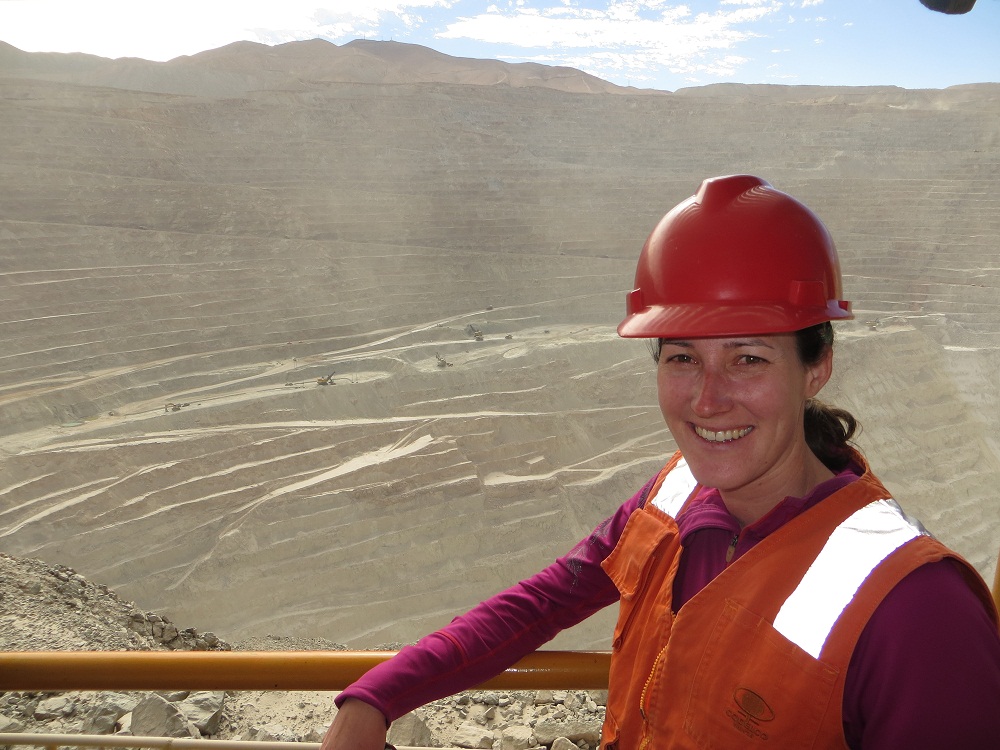
 RSS Feed
RSS Feed